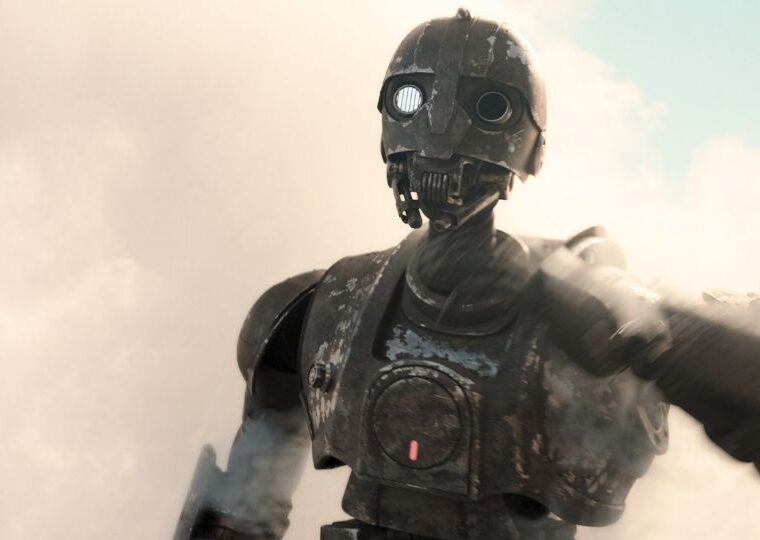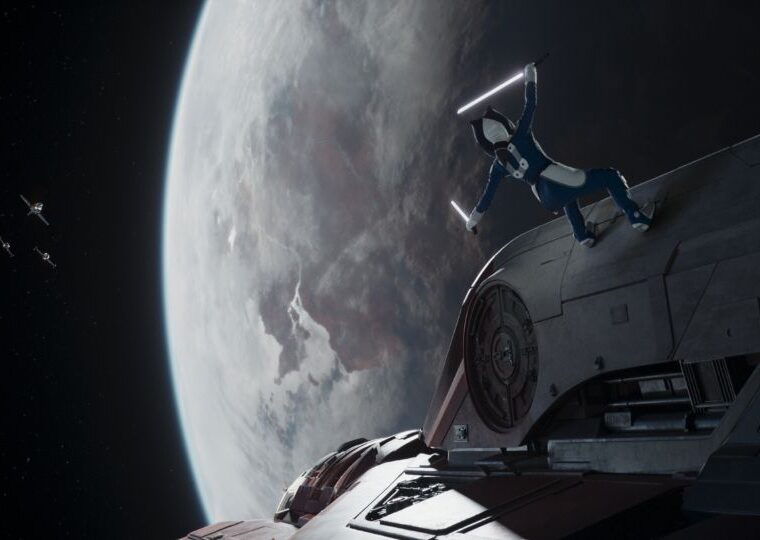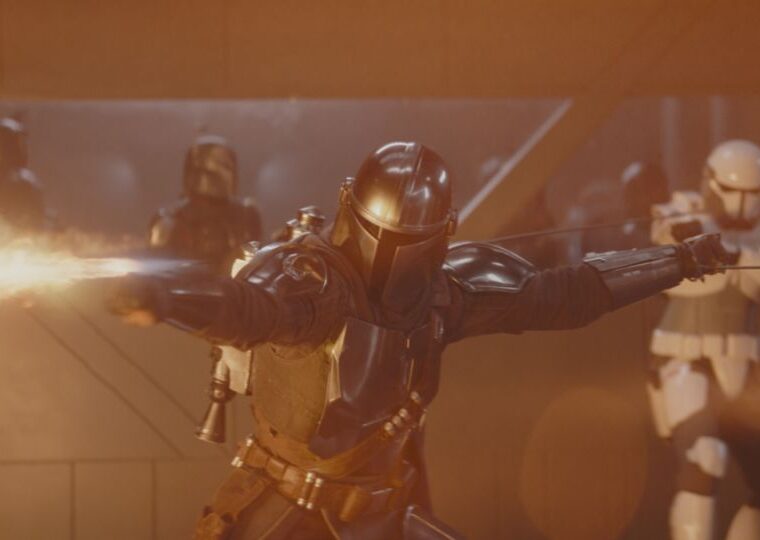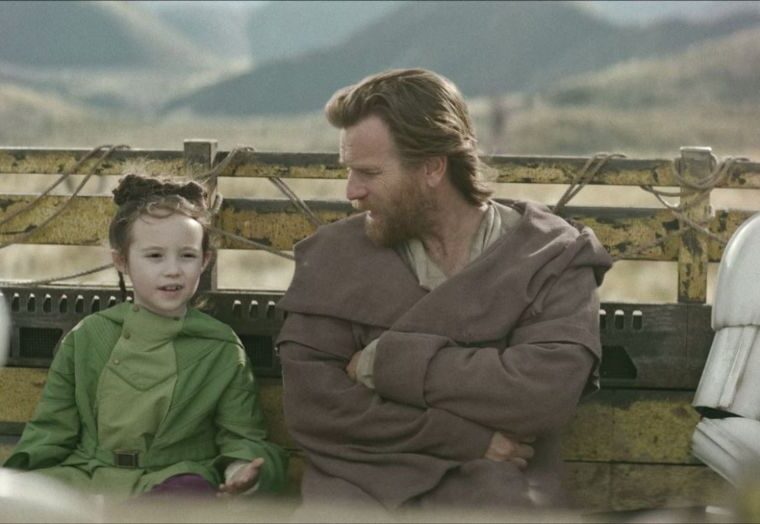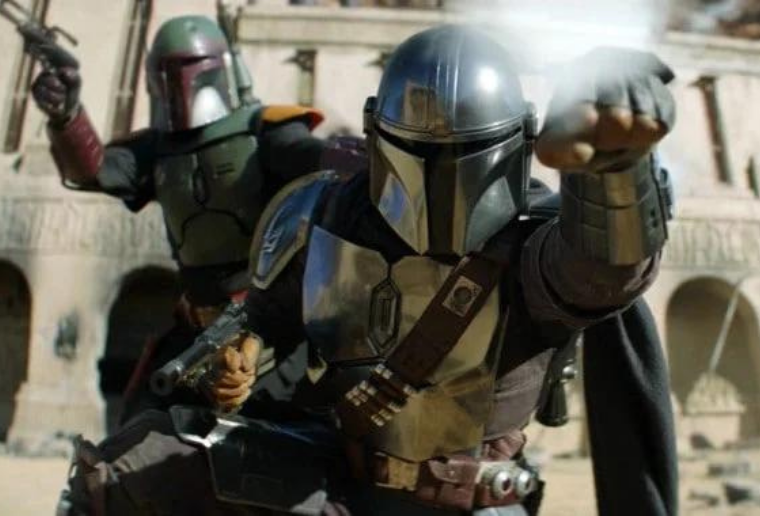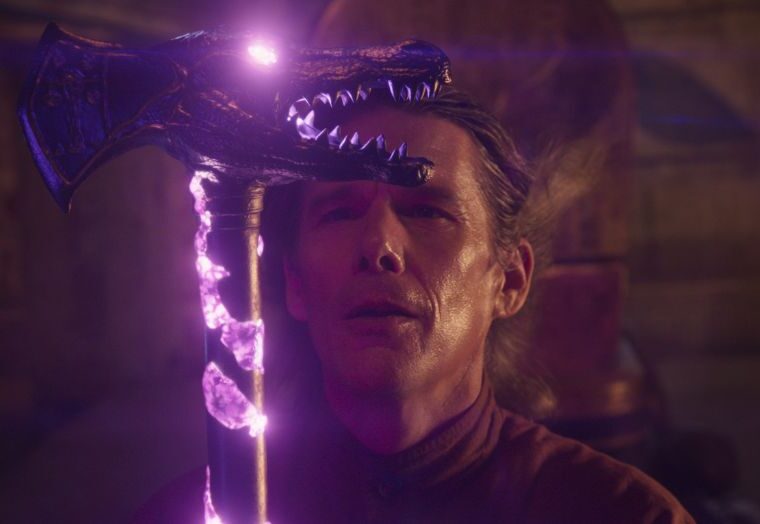Mulan Case Study
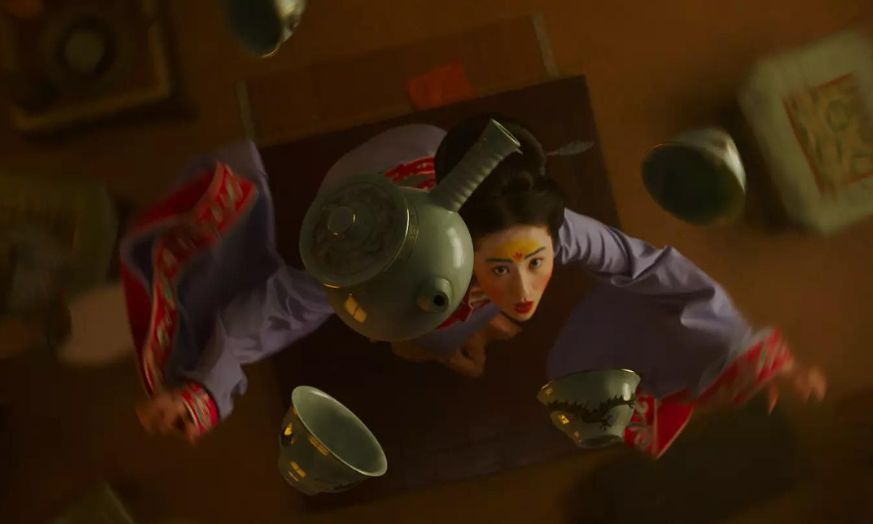
Case Study
Mulan 2020 features visual effects of all varieties, including gorgeous sweeping shots of far-reaching deserts and scenic overhead flyovers of lush, green rice paddies. Read on to learn about how Image Engine instilled the beautiful environments of Mulan with epic scale while keeping its work hidden from the roving eye.
2020’s Mulan – following hot on the heels of an annual roster of efforts like The Jungle Book (2016), Beauty and the Beast (2017), and The Lion King (2019) – is the 16th live-action remake of a Disney animated original, and the latest effort to seek a new perspective on the source material. Like these other films, Mulan uses cutting edge visual effects to transform the original animators’ imaginations into something new, bold and beautiful. And in this respect, Mulan succeeds with aplomb.
In Niki Caro’s live-action reimagining of the tale, there are no talking CG dragons or jolly ancestral spirits. Nevertheless, its visuals turn the handsome setting of Imperial China into a character all of itself. Mulan 2020 features all varieties of gorgeous geographies, from sweeping shots of far-reaching deserts to scenic overhead flyovers of lush, green rice paddies.
The production filmed several environments on location, but many came to life thanks to the latest in visual effects. And here’s where Image Engine stepped in. Image Engine joined Mulan to deliver 271 shots of varying size and shape. The broader scope of work required the creation of such panoramic vistas as those described above, but it was the variety of granular challenges within each sequence that brought Image Engine’s environmental expertise to the fore.
Read on to learn about how Image Engine instilled the beautiful environments of Mulan with epic scale while keeping its work hidden from the roving eye.
The tale of Hua Mulan
“The scope of work on Mulan was exceedingly varied,” recalls Christian Irles, Image Engine’s Visual Effects Supervisor on Mulan.” At Image Engine, our work usually focuses around creating hero creatures or environments, and implementing that work across multiple shots. You can learn about those assets as you develop them from shot to shot. Mulan was a more complex, involved affair, in that almost every sequence we worked on required a different expertise or discipline. We delivered a myriad of work: everything from big environment builds to CG animals and simulated cloth. That variety made things tricky.”
The work also had to feel completely seamless, whatever the task. “Niki based her film more on re-interpreted historical events rather than considering it a remake of the 1998 animated film,” explains Christian. “Although Mulan does contain fantastical elements, the overall brief was to keep the project anchored in reality. Our mandate was to be truthful to that mood, and to do so via seamless, invisible results.”
The extent of Image Engine’s respect for the film’s vision is evident right from the tale’s beginning, which introduces audiences to Mulan at her tulou homestead.
Home sweet home
The tulou are rural dwelling structures unique to the Hakka in southeastern Fujian, China. The buildings are striking, circular masses of architecture capable of housing up to 800 people in large peripheral walls packed with living areas, storehouses and halls.
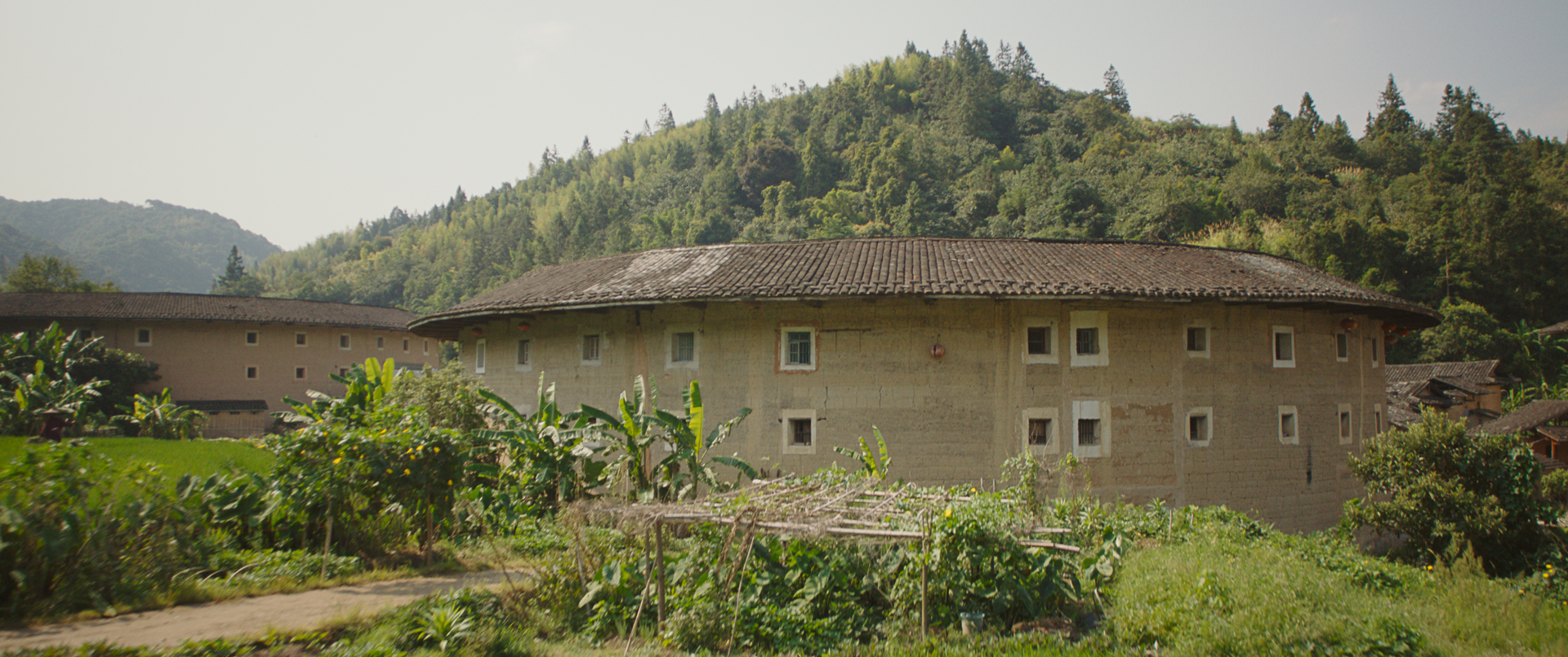
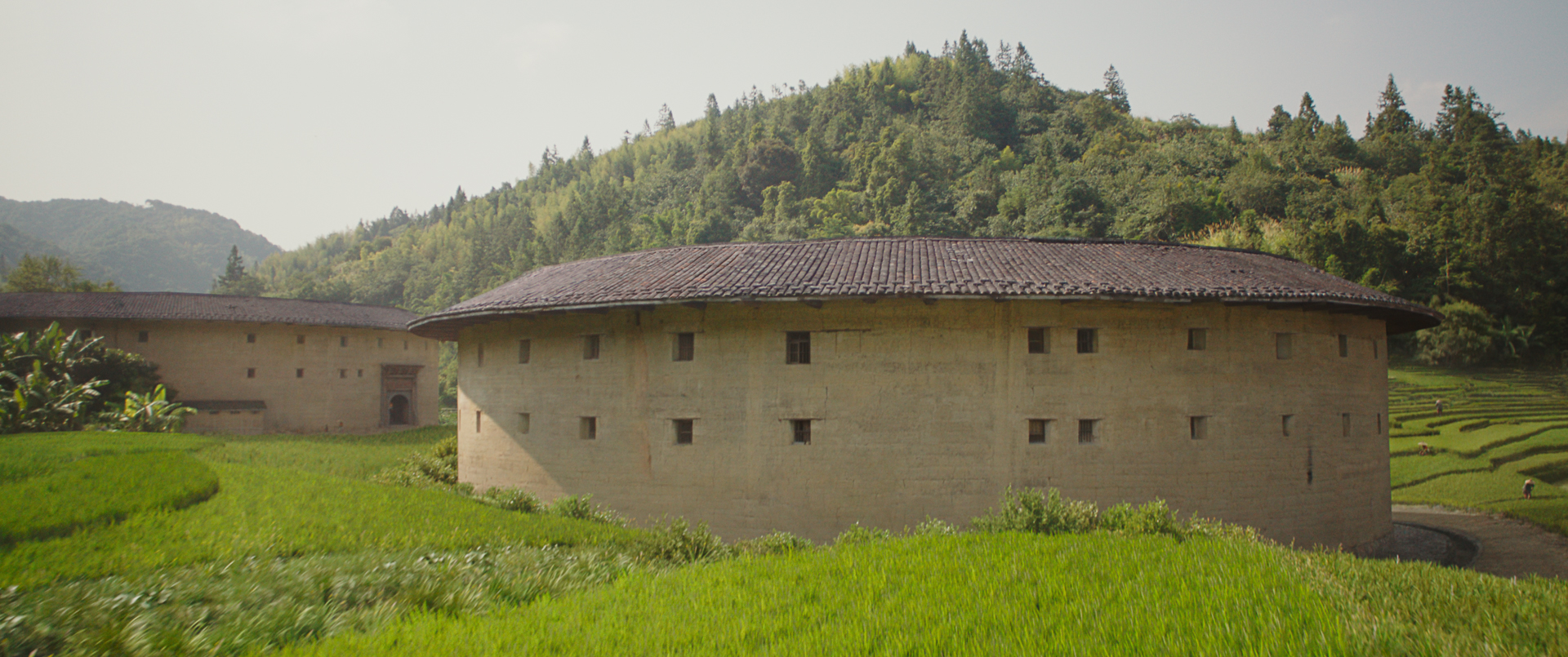
Mulan introduces audiences to its hero in her family’s tulou, so it’s a fitting place to start discussing Image Engine’s work on the film, too. The studio’s tulou sequences covered various scenarios, all filmed in different locations: exterior shots filmed in Fujian; tulou interiors filmed at a practical set built at Kumeu Studios in Auckland, New Zealand; and establishing tulou shots filmed on New Zealand’s Te Waipounam island.
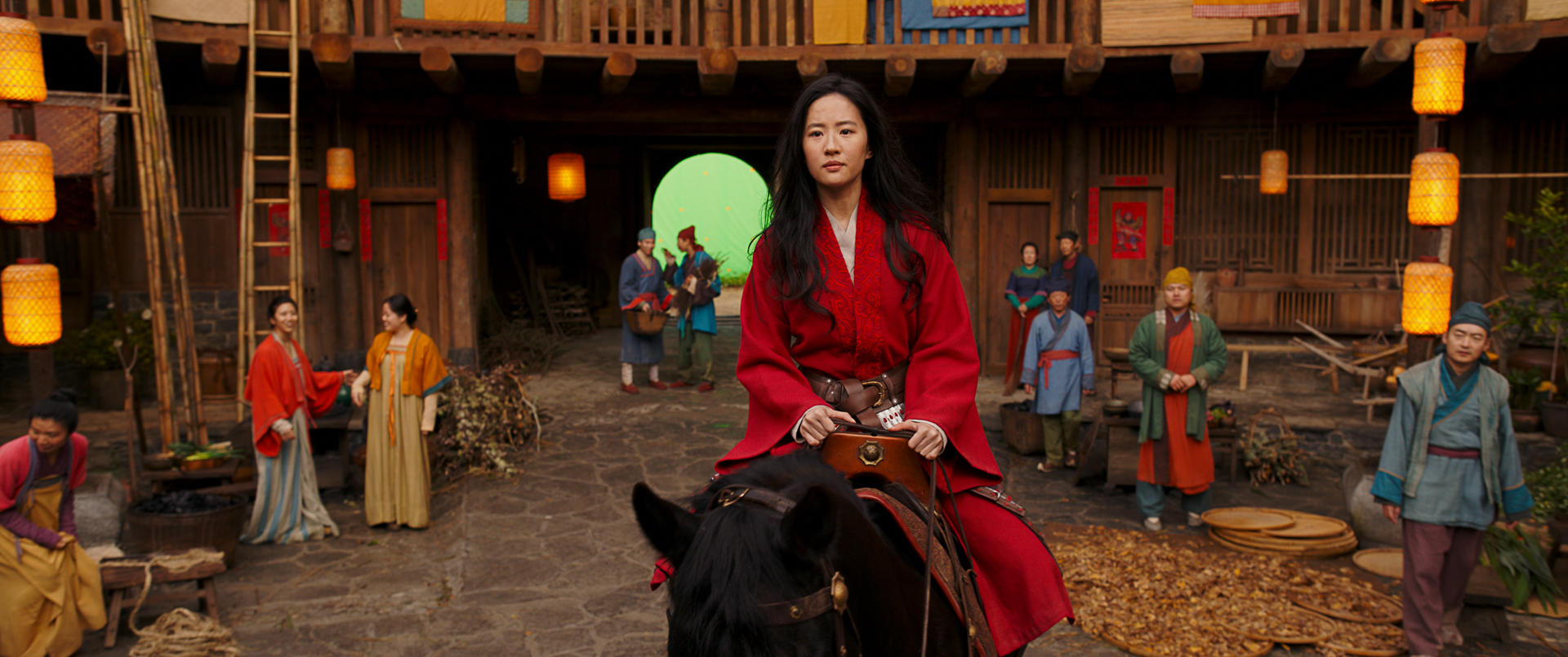
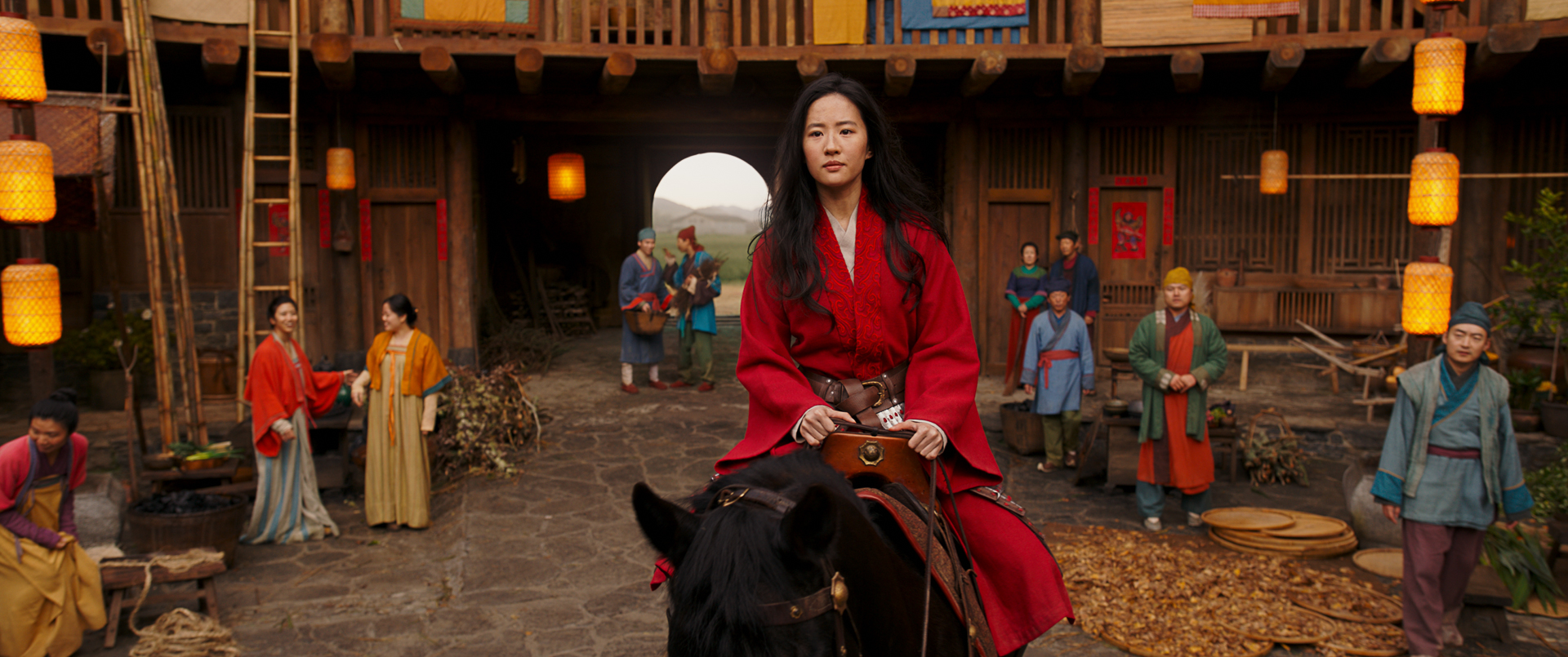
Wherever and however the shot was filmed, Image Engine ensured it looked and felt consistent across all tulou sequences, so that audiences remained immersed in the narrative’s one-location illusion.
The tulou establishing shot is an excellent example of Image Engine’s work on augmenting the on-location footage. Here, the camera sweeps over a fertile rice paddy and slowly moves up to take in the tulou and its interior. “The production filmed the original plate in Fujian,” says Hubert Zapalowicz, Lead Matte Painter and Environment Artist at Image Engine. “The digital matte painting (DMP) team took the plate and added mid- and far-distance rice paddies and the CG team created the foreground paddies. We also worked on sky replacement, atmosphere enhancement, plate cleanup and re-landscaping of the environment, and we modified the look of the practical tulou to match the build in Kumeu Studios, both inside and out. The team did an amazing job of blending everything seamlessly into existing photography; even down to matching the CG rice paddy movement with the wind as seen in the plate.”
Image Engine didn’t just work on what audiences could see from outside in, but also from inside out, as Hubert explains. “We had a lot of shots involving the exterior rice field environments as seen from inside the tulou’s main door. As the interior was shot on the Kumeu set, we needed to enhance and separate layers for correct parallax, scale and orientation and add them into the set’s blue screen exteriors.
“A more complex 2.5D project puzzle features in the scene where Mulan chases a chicken to the tulou rooftop. The audience gets a good view of the rice fields from up there. The reference we had was from the fall, and the landscape felt a little dull in colour for a truly Disney-worthy shot. We tweaked the colour and reinvented a lot of the landscape to ensure it felt vibrant and all a part of the same exterior as witnessed in our establishing shot.”
Out in the rice paddies
Another Image Engine shot sees Mulan and her father training in the rice paddies during a glowing golden hour. Mulan whips and whirls her bō against an extensive background of dawn-lit, foggy hills; a stunning natural vista that was initially nothing but LA blue screen.
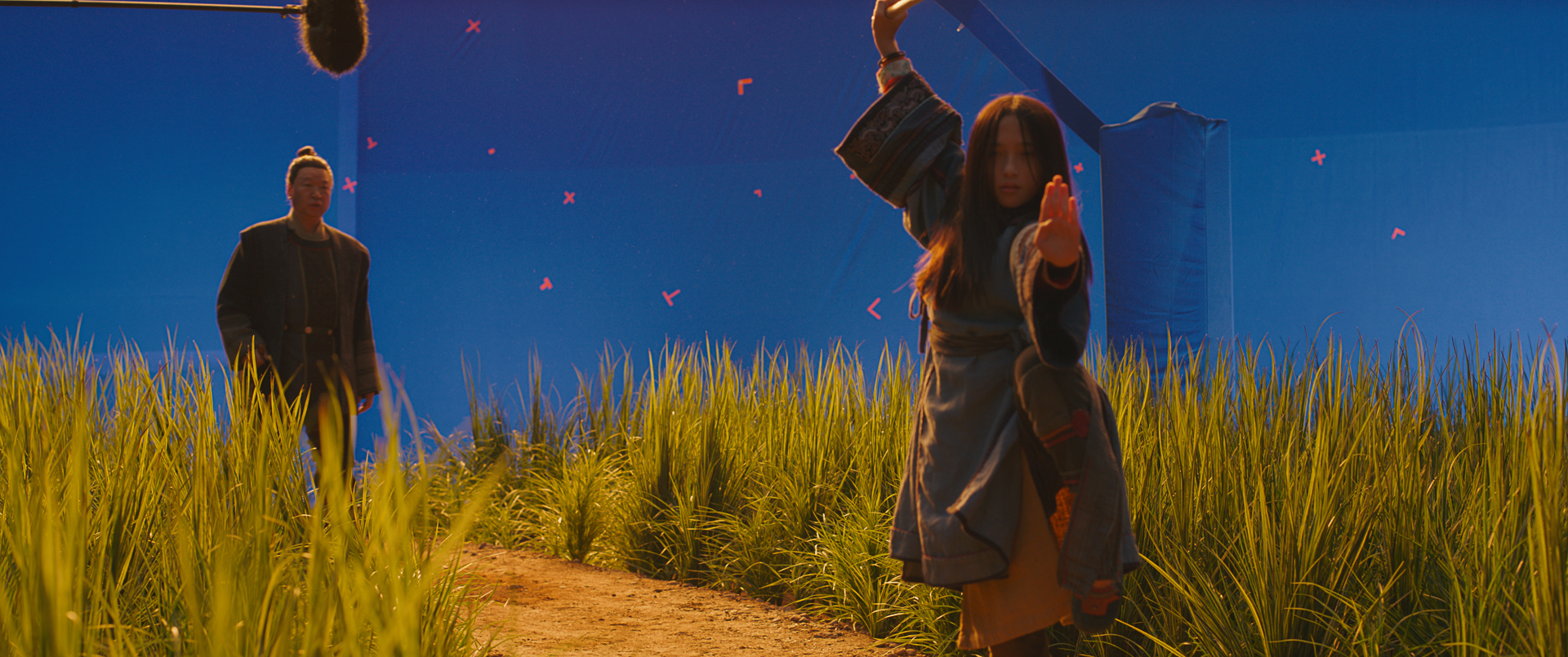
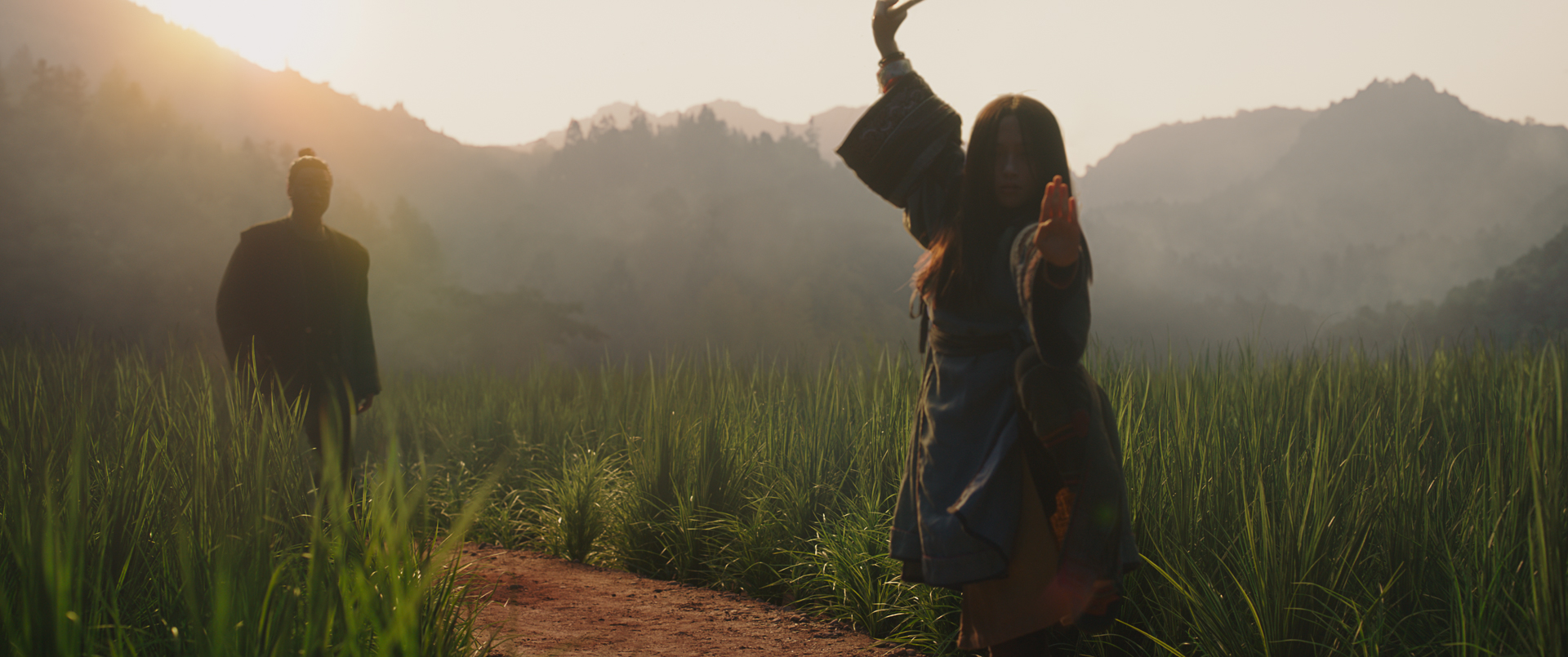
“The training sequence comprised part of the reshoots and was turned over quite late,” says Jesus Lavin, Compositing Supervisor on Mulan. “The challenge was the speed in which we had to work while attaining the precise aesthetic vision from the production. We also had things to consider like on-set grass over the blue screen with a very shallow depth of field, making the edge work crazy! Our DMP and compositing departments were amazing, regardless. They did a fantastic job of integrating their 2.5D DMP backgrounds with a precise yet subtle comp integration, and achieving the early morning, smoky-sunrise-silhouette look the production wanted.”


Another Image Engine rice paddy shot required an altogether different approach. The shot itself is gorgeous: a high flyover of stepped rice paddy vegetation, the lush green of the foliage cut across with glancing god rays. What’s impressive is that the view is entirely CG.
“The original plate for the shot was filmed by a second unit doing a scout session with a drone, and was intended for reference only,” says Christian. “Niki fell in love with it, however. The drone JPG quality was inadequate, so she asked if we could recreate the imagery in CG.”
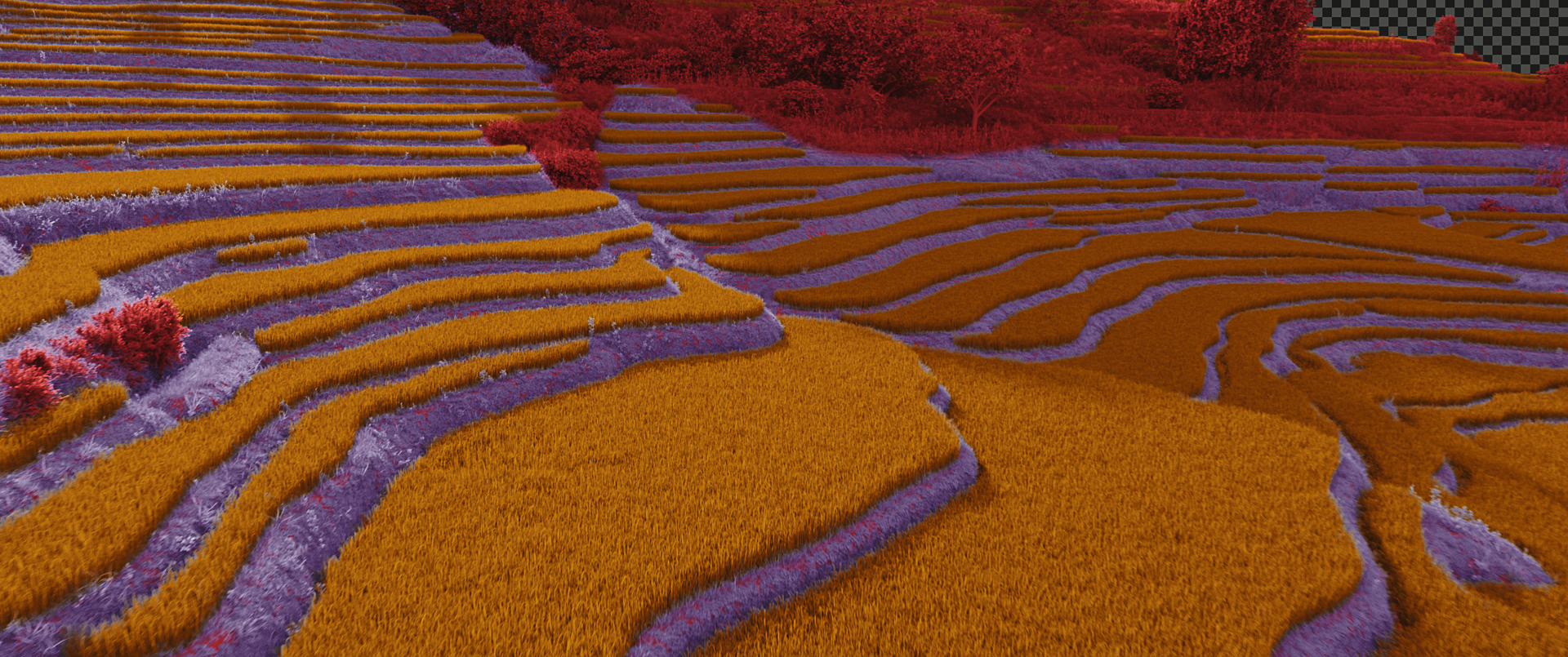
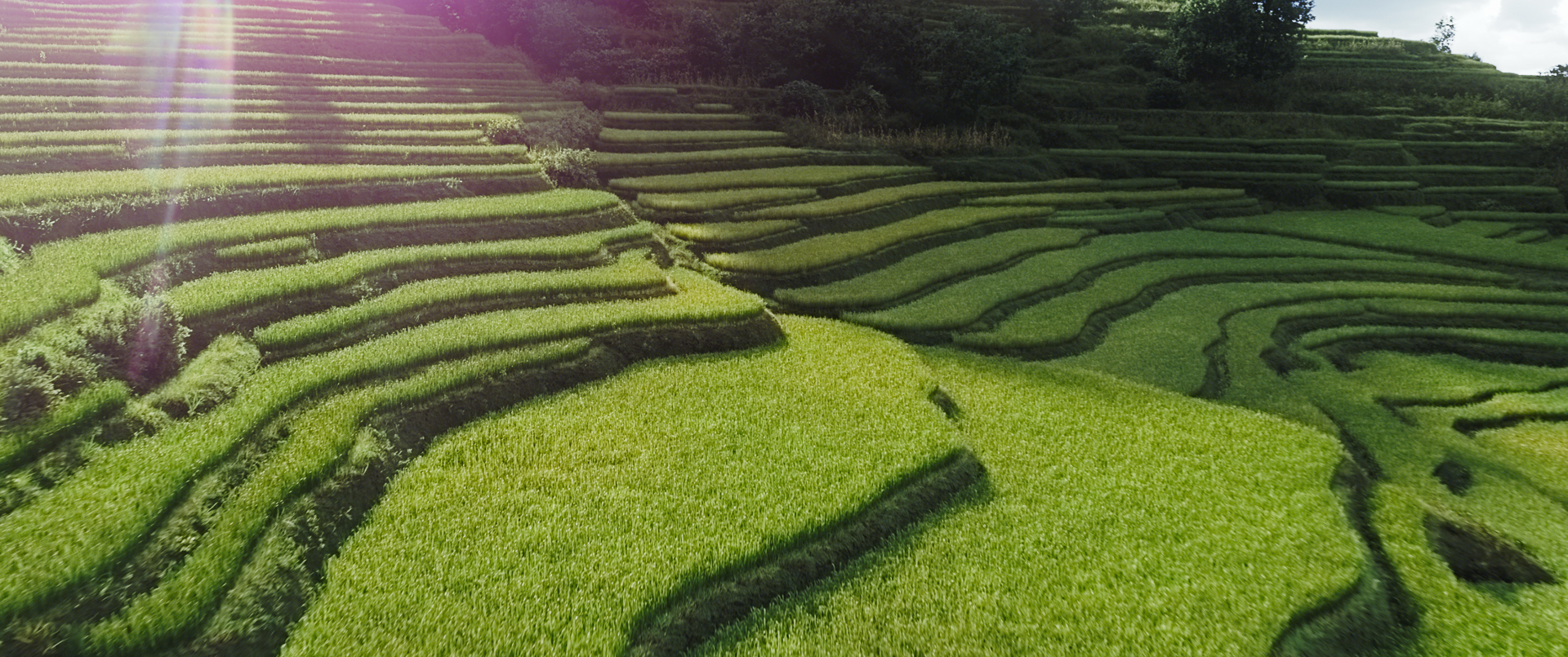
Yuta Shimizu, CG supervisor on Mulan, led the charge. “We wanted to match the low-resolution drone plate while retaining all of its subtleties, down to the look of the lens flare,” he explains. “We matched the position of all the paddies, rocks and bushes, and shaded and lit each one to match the plate. Houdini helped to scatter the plants and bushes, which we then placed using Gaffer’s instancer. We also pre-simmed rice plants and added wind attributes to propagate the result in Gaffer and added semi-auto wind at render time. DMP added the distant hills, and comp colour balanced the CG and added the lens flare to match the plate. The shot was a great crossover effort from the CG and DMP teams!”
I’ll make a chicken out of you
Mushu doesn’t make an appearance in the Mulan live-action reimagining. Still, a variety of other more garden-variety CG animals do, rendered so as to make their computerised origins utterly invisible to the naked eye. The first animal rendered in CG by Image Engine was that of a chicken.

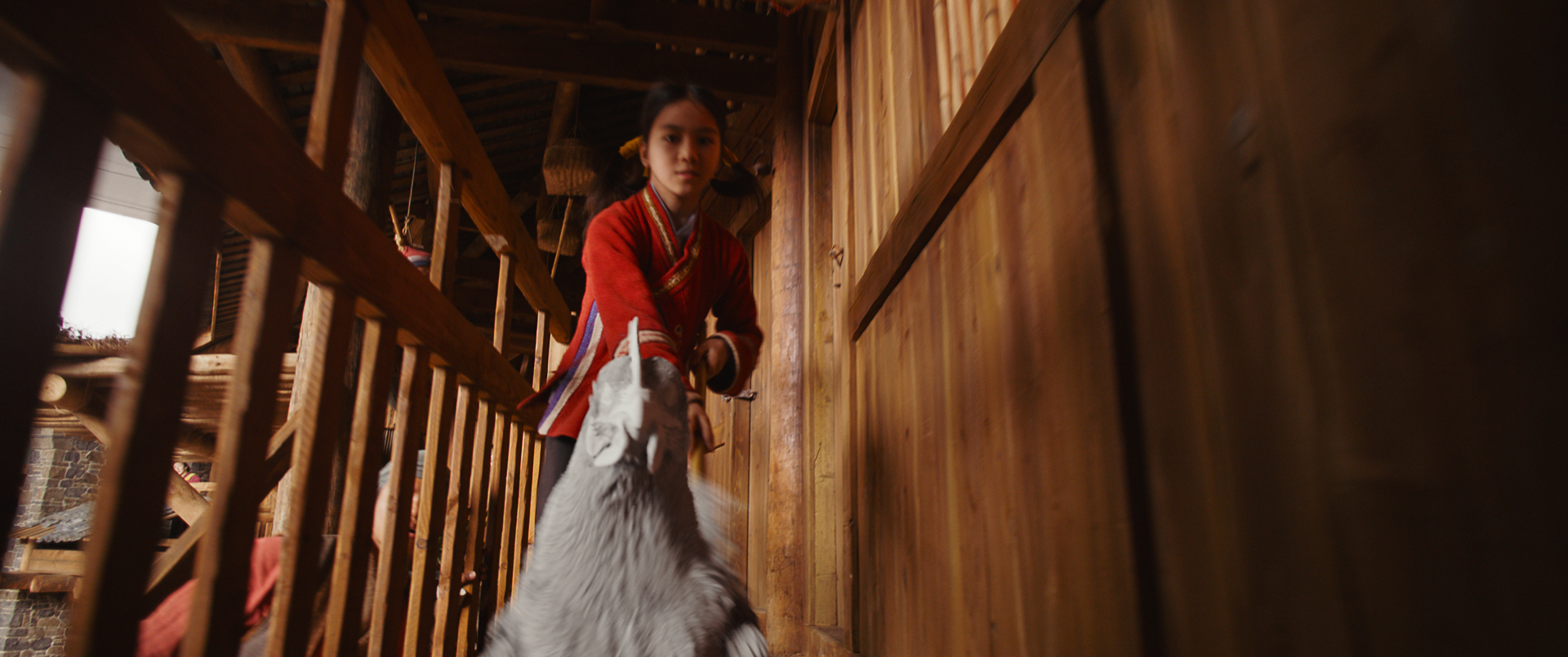
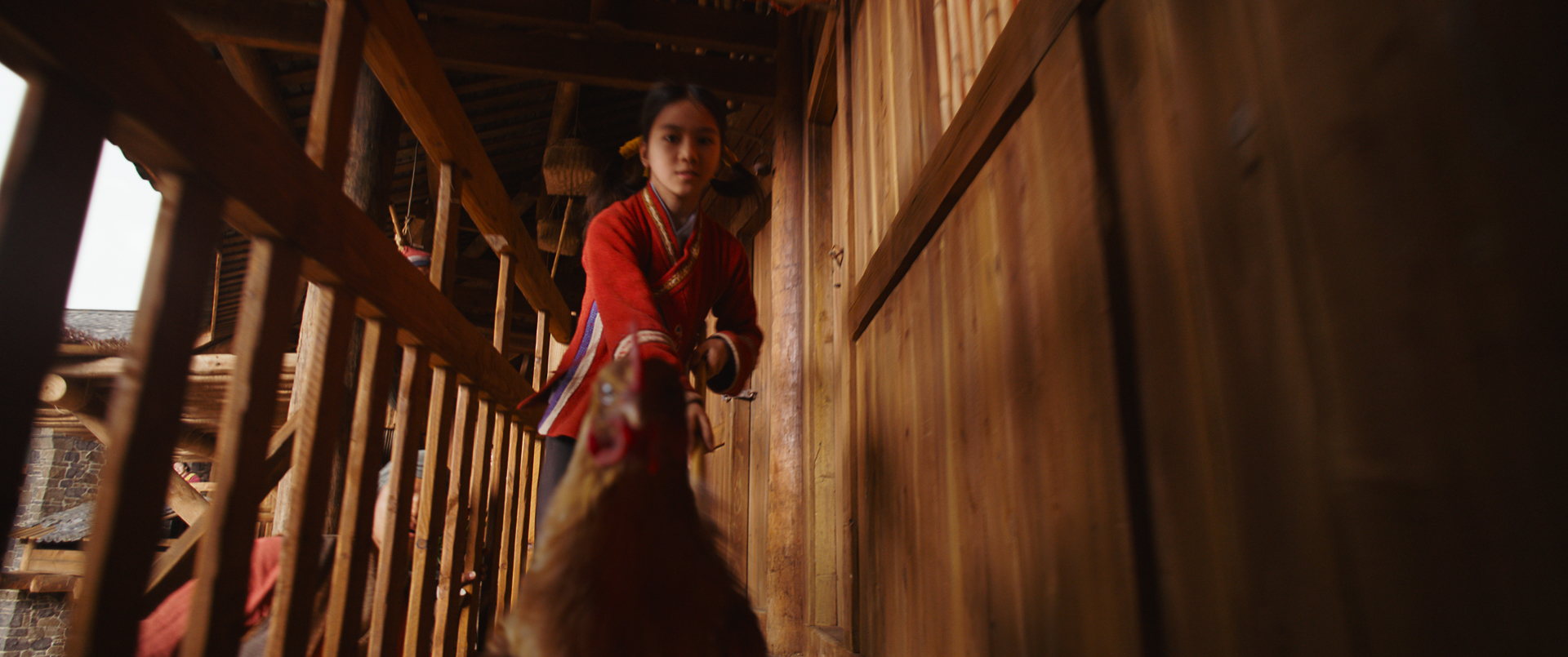 “Creating the feathers was one thing, but handling the data was another consideration entirely,” says Yuta. “We did not want the feathers to be an animation rig but still wanted to give control and volume representation so animators could see how their work would affect the scene, without making the scene too heavy. We decided to create a point deformer in Gaffer to take the weight information baked into Houdini. We could use this to generate complex feather geometry and simple, representative planes and weight them to swap at render time in Gaffer, which was a very successful process. The creature FX team then helped us to simulate and shot model the chicken’s muscle and skin to get the right, ‘alive’ feel.”
“Creating the feathers was one thing, but handling the data was another consideration entirely,” says Yuta. “We did not want the feathers to be an animation rig but still wanted to give control and volume representation so animators could see how their work would affect the scene, without making the scene too heavy. We decided to create a point deformer in Gaffer to take the weight information baked into Houdini. We could use this to generate complex feather geometry and simple, representative planes and weight them to swap at render time in Gaffer, which was a very successful process. The creature FX team then helped us to simulate and shot model the chicken’s muscle and skin to get the right, ‘alive’ feel.”
Visual fidelity was vital, given that the CG chicken appeared in cuts alongside those of the real on-set chicken. “We did what our clients called a ‘Pepsi challenge’,” remembers Christian. “We placed our CG chicken next to the real thing, then tweaked and tweaked until you couldn’t tell them apart!”
Image Engine also created two CG hares that race alongside Mulan as she rides horseback toward her tulou. “We based these CG hares on a real taxidermy mount used on location for framing and lighting reference, and the CG hares looked so much like it,” says Christian. “The team were really dedicated in making the animation feel just right, from the movement of their run cycles to ensuring their eyes felt alive and readable during the shot. The result was awe-inspiring.”
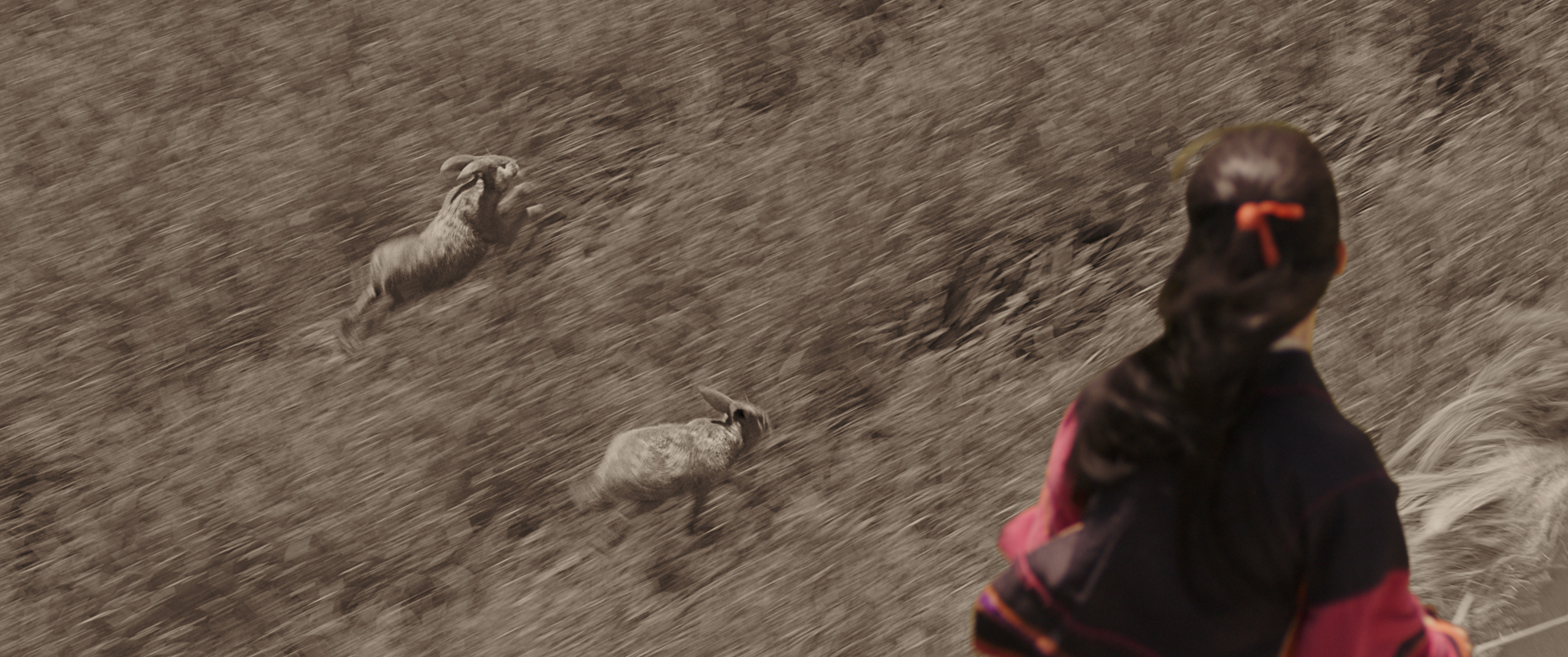

Finally, Image Engine’s artists created a CG Jorō spider that descends onto the table during Mulan’s matchmaker meet at the tulou. “The spider hangs from a web and unfurls its legs; it was a tiny and delicate creation,” remembers Christian. “When the meeting attendees notice the spider, all hell breaks loose, as they knock the table’s teapot and cups into the air, which Mulan catches acrobatically. We created all of the crockeries in CG, ensuring they felt photorealistic and properly lit. We also animated each item with a believable sense of weight to make Mulan’s actions feel all the more impressive.”

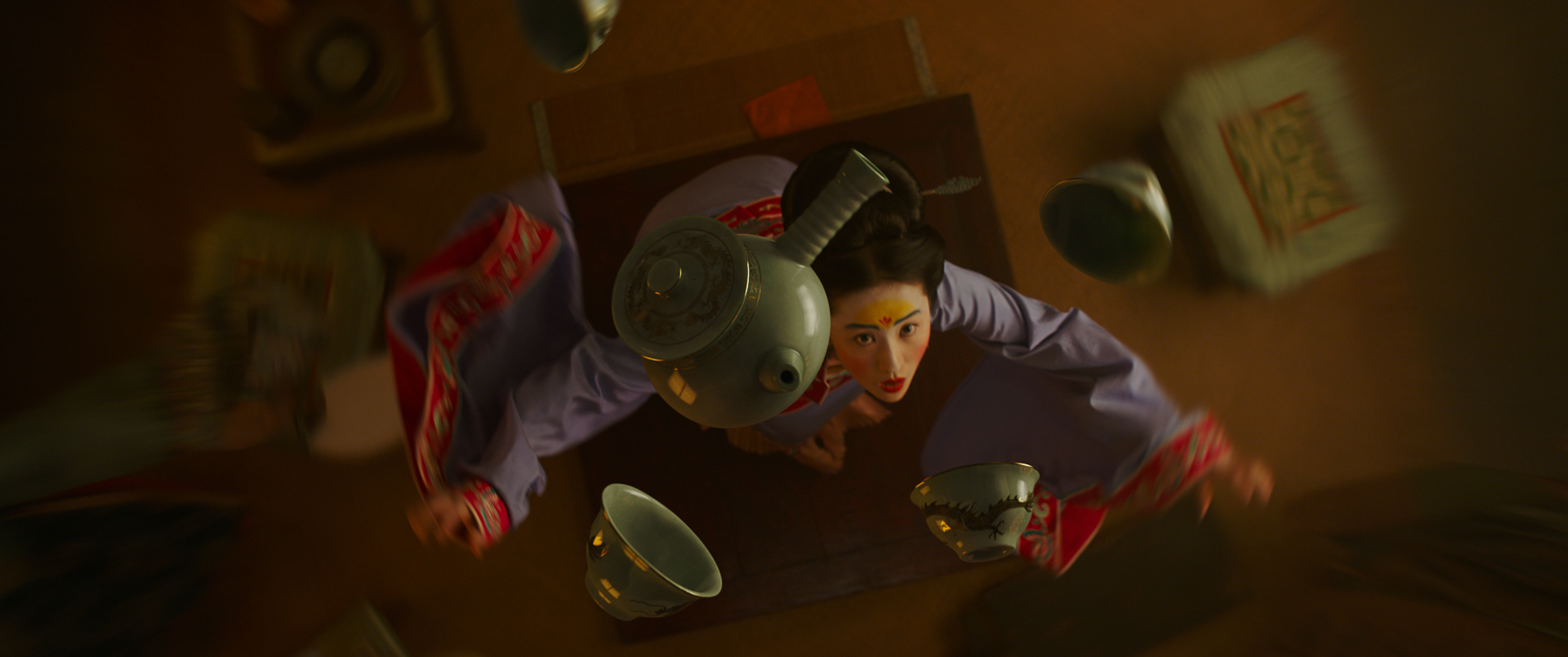
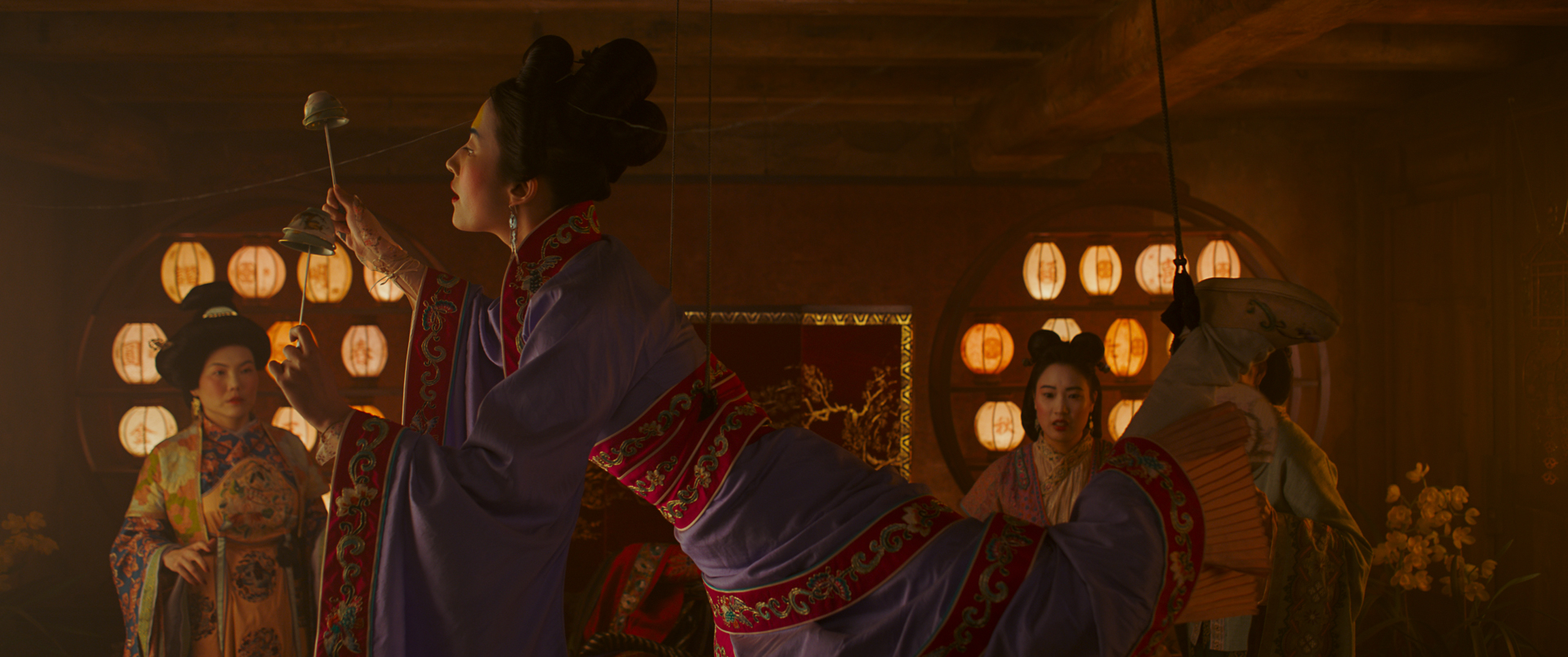
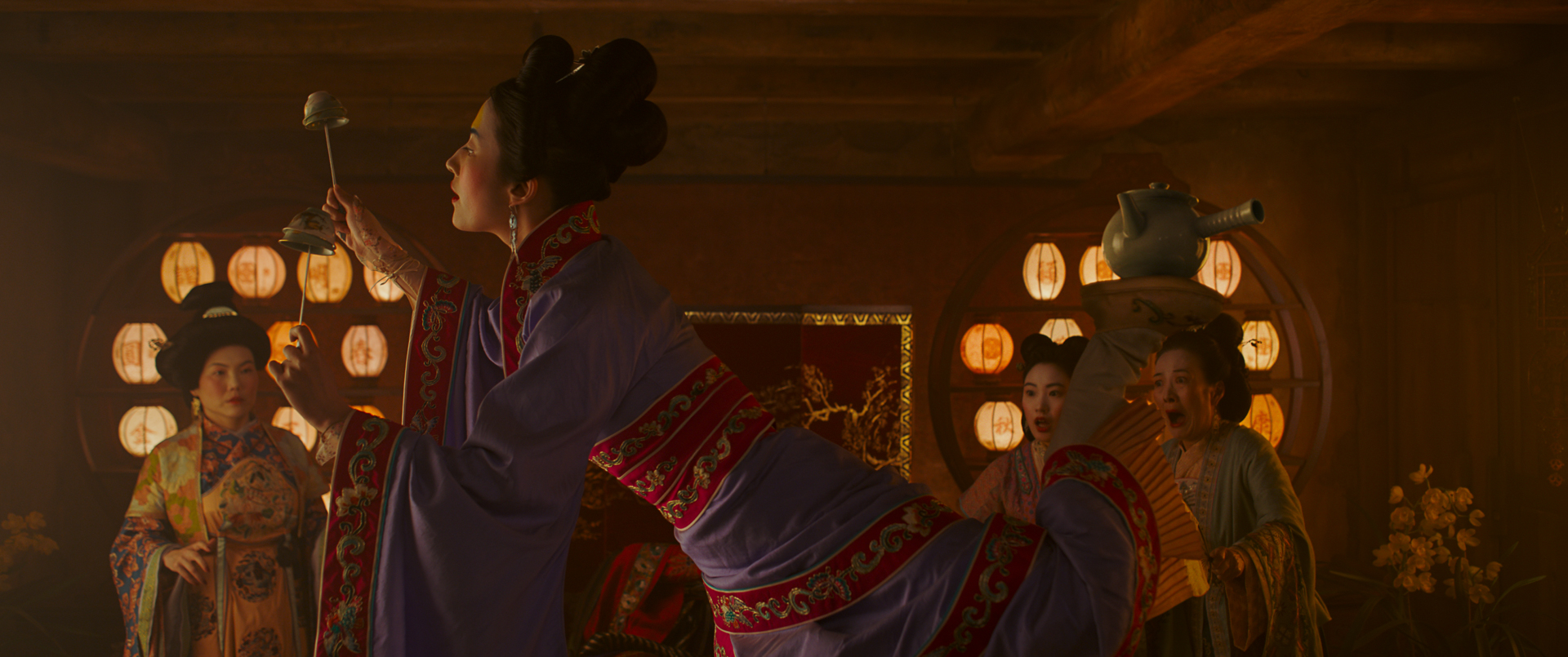
Deserts, garrisons and outposts
In later scenes, Mulan’s gaze shifts from the homely beauty of the tulou to the grand geographies of Imperial China – and the armies that inhabit it.
One sequence reveals a Rouran warrior encampment nestled in the foothills of a mountain range, the dawn sun glancing over its lower ridges. The camp is alive with activity as the Rouran warriors prepare for the day ahead. “The plates had only a few actors, and only three tents were practical builds; we achieved everything else in post,” reveals Christian. “We modelled the digital tents based on their practical counterparts and built eight agents for the crowds, then added texture variation onto everything. For the horses, we reused our hero CG horses, which we’ll discuss a little later on!”
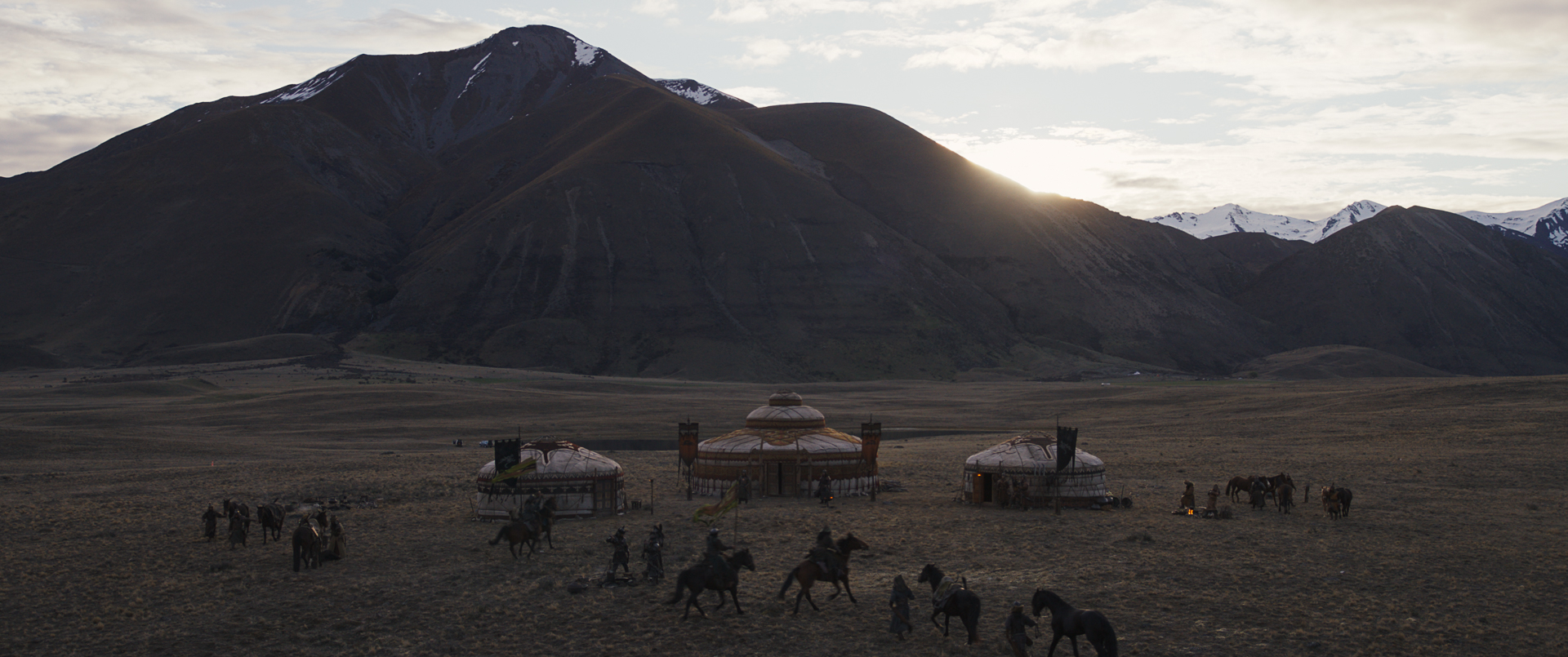
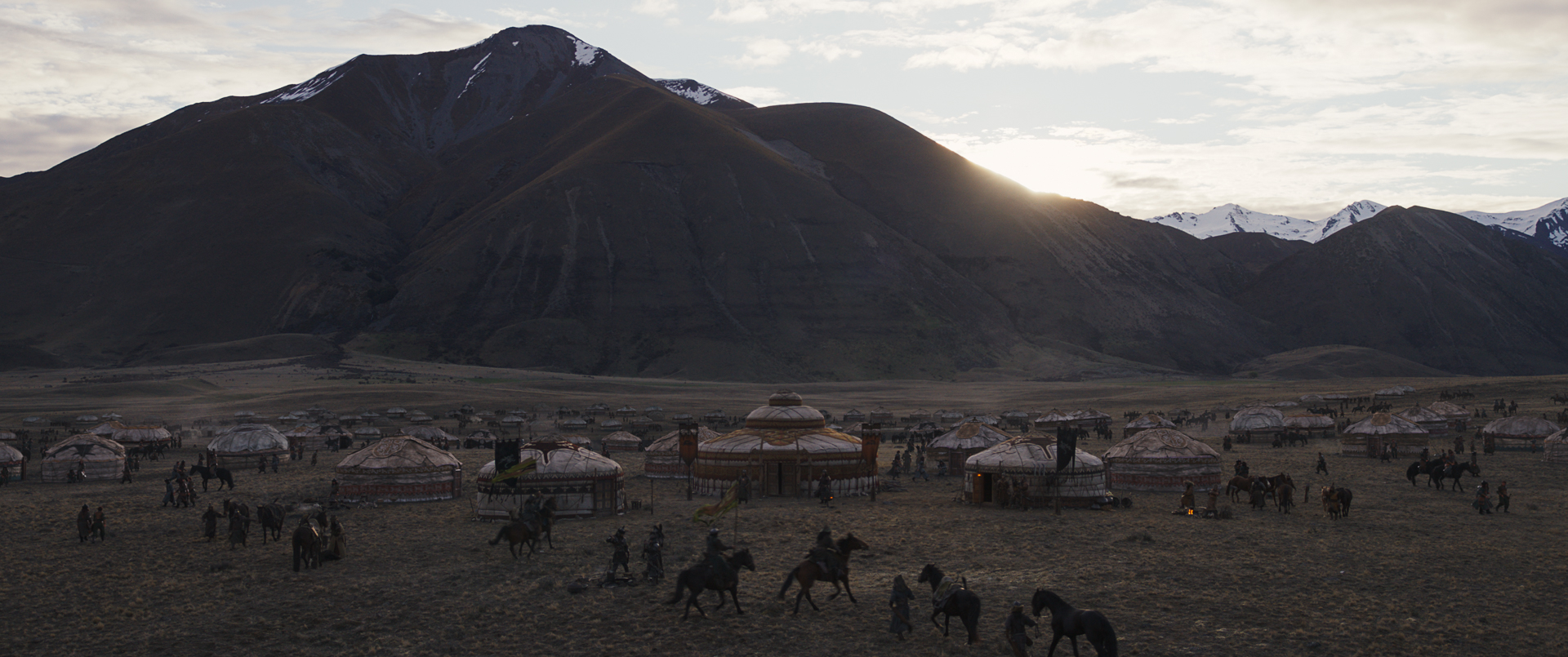
Image Engine also created a well-fortified mountain garrison, built of stout, impenetrable stone. In the only establishing shot of this garrison, Image Engine added their 3D fortress model to a plate filmed in New Zealand’s South Island. The renders were heavily touched up in DMP to achieve a grand scale and weathered look. “Kudos goes to the whole DMP team, but particularly the master of this sequence, our senior digital matte painter Julie Joannoteguy,” says Hubert. “Julie took the CGI renders and made them look super realistic using on-set photography and internet references of buildings like the Great China Wall and Gobi Desert fortifications. She rebuilt most of the CGI architecture, matched lighting and footage, and subtly aged everything to make it sit nicely in its epoch.”
As with the tulou, closer shots of the mountain garrison saw Image Engine extend the fortress both inside and out from another impressively large set built at Kumeu Studios. “The partial Kumeu set was super impressive and built to scale, but only presented a portion of the larger, sprawling fortress as witnessed in the film,” says Christian.
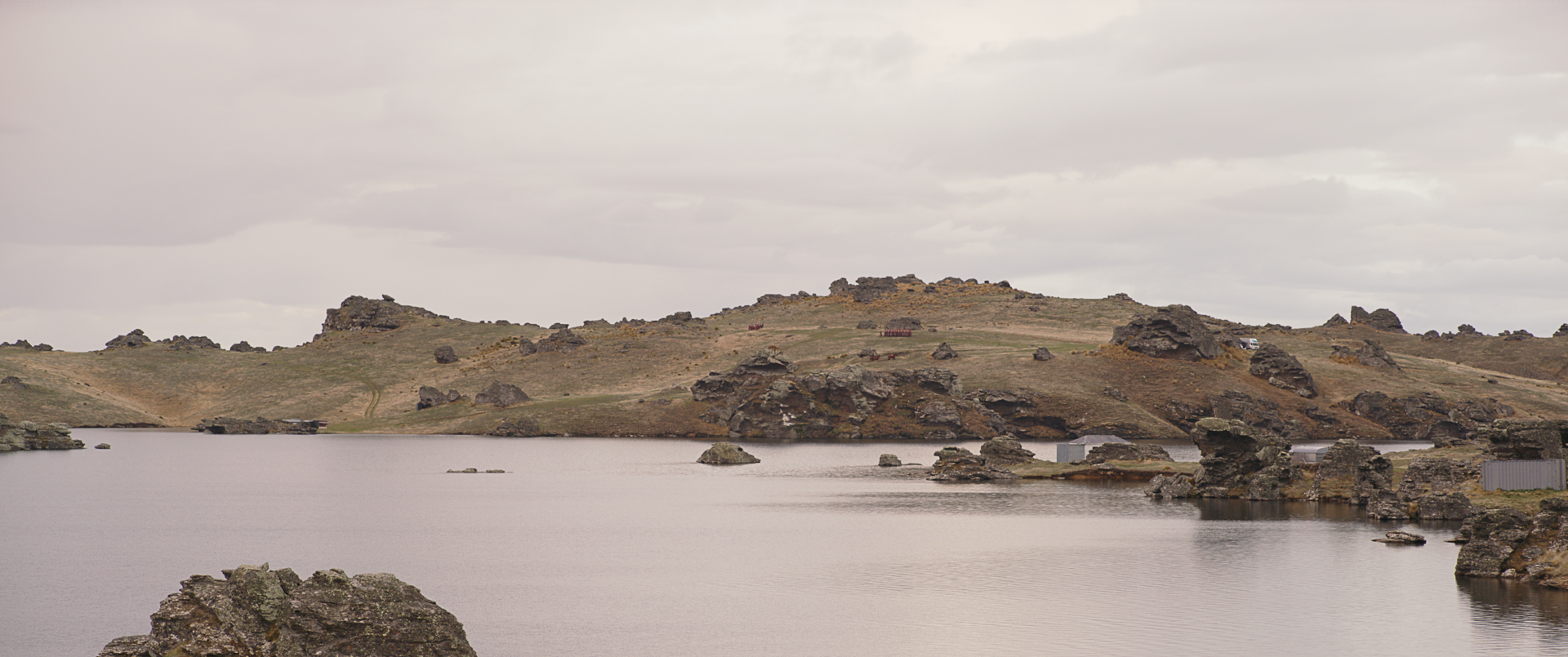
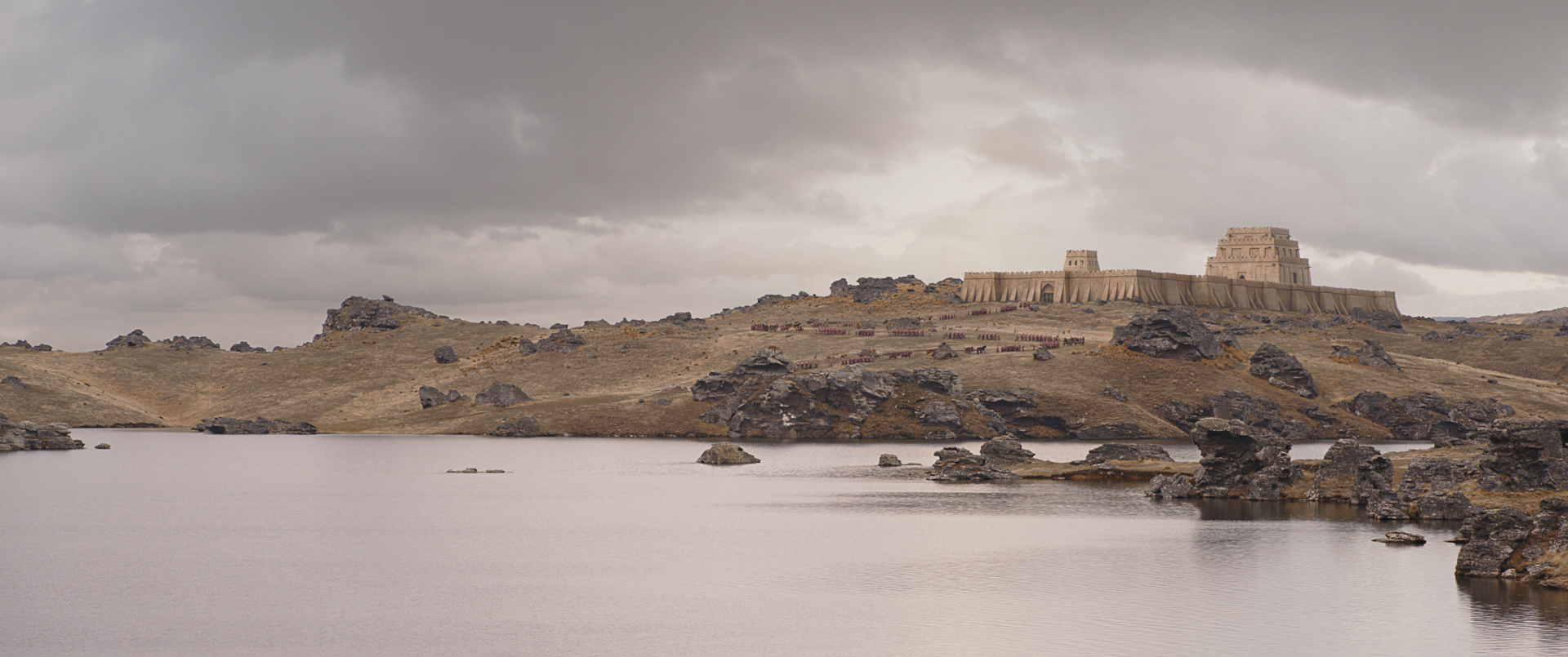
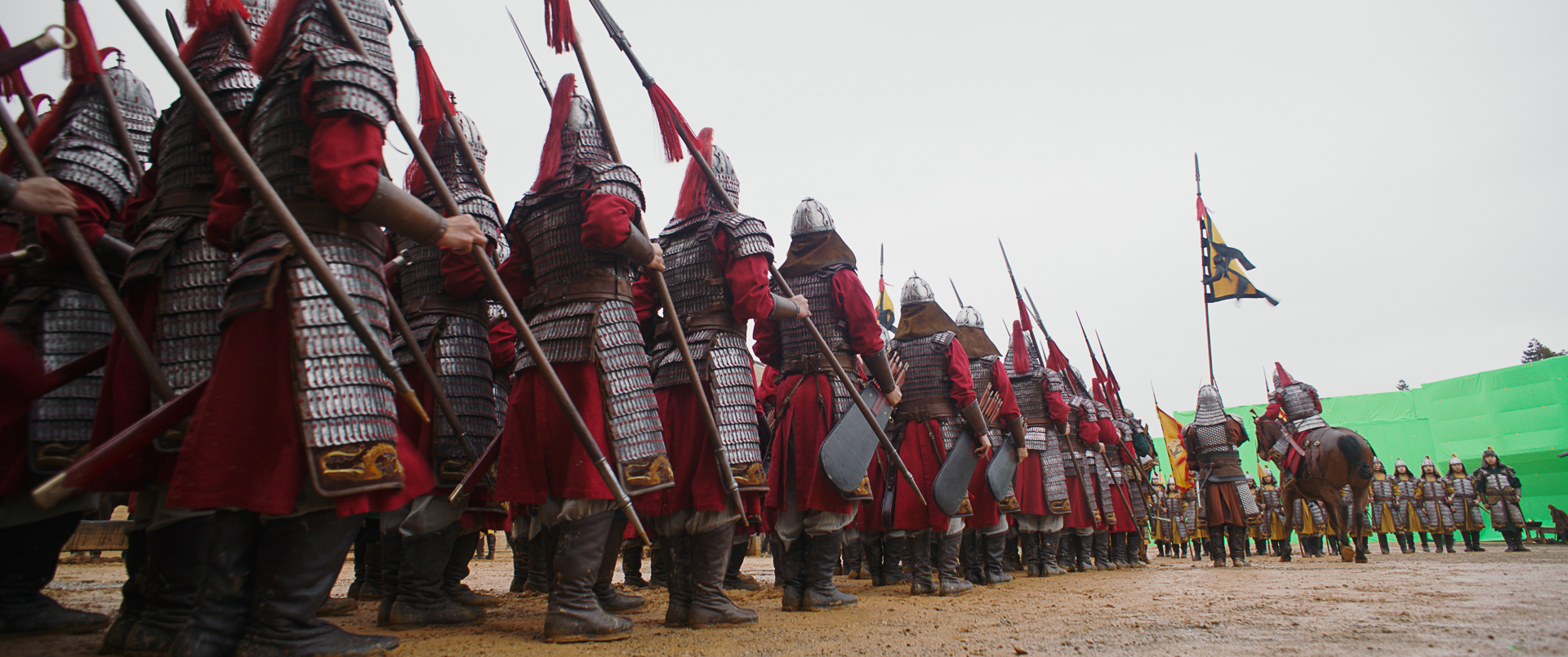
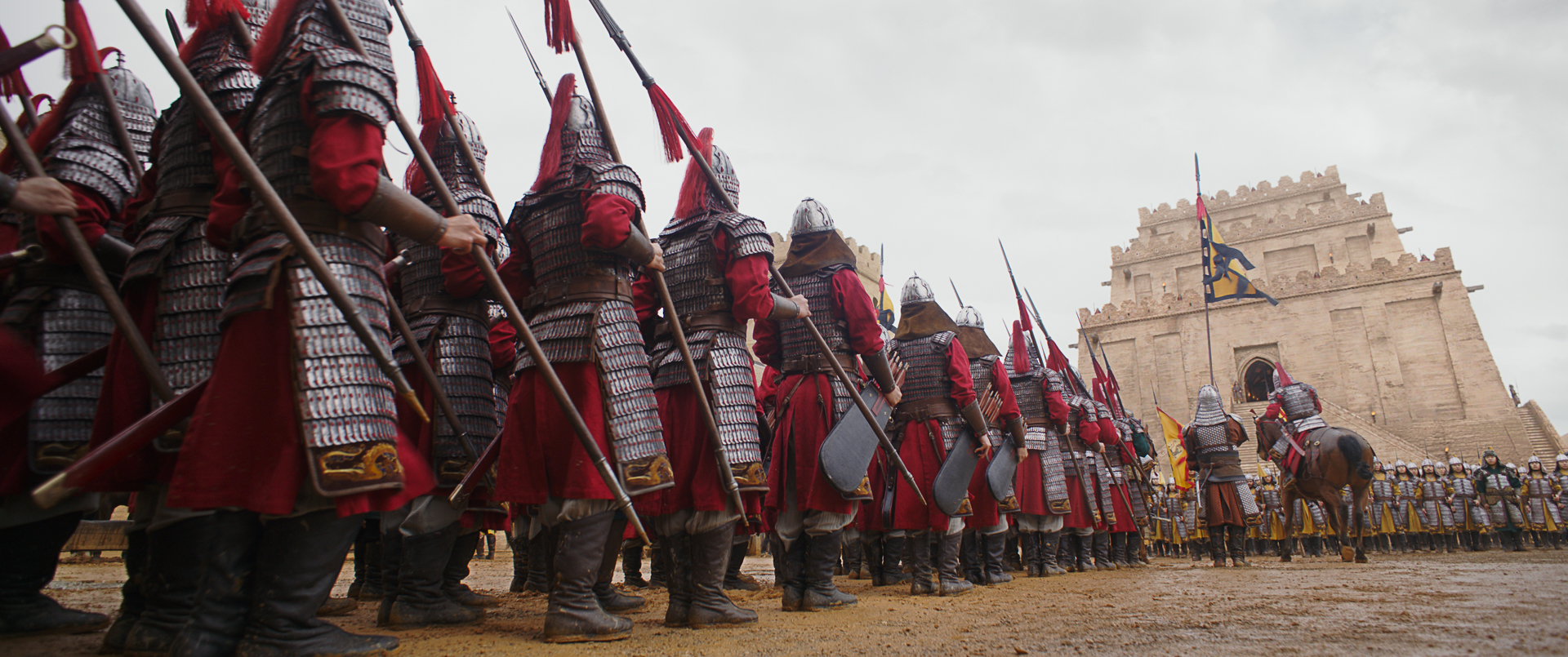
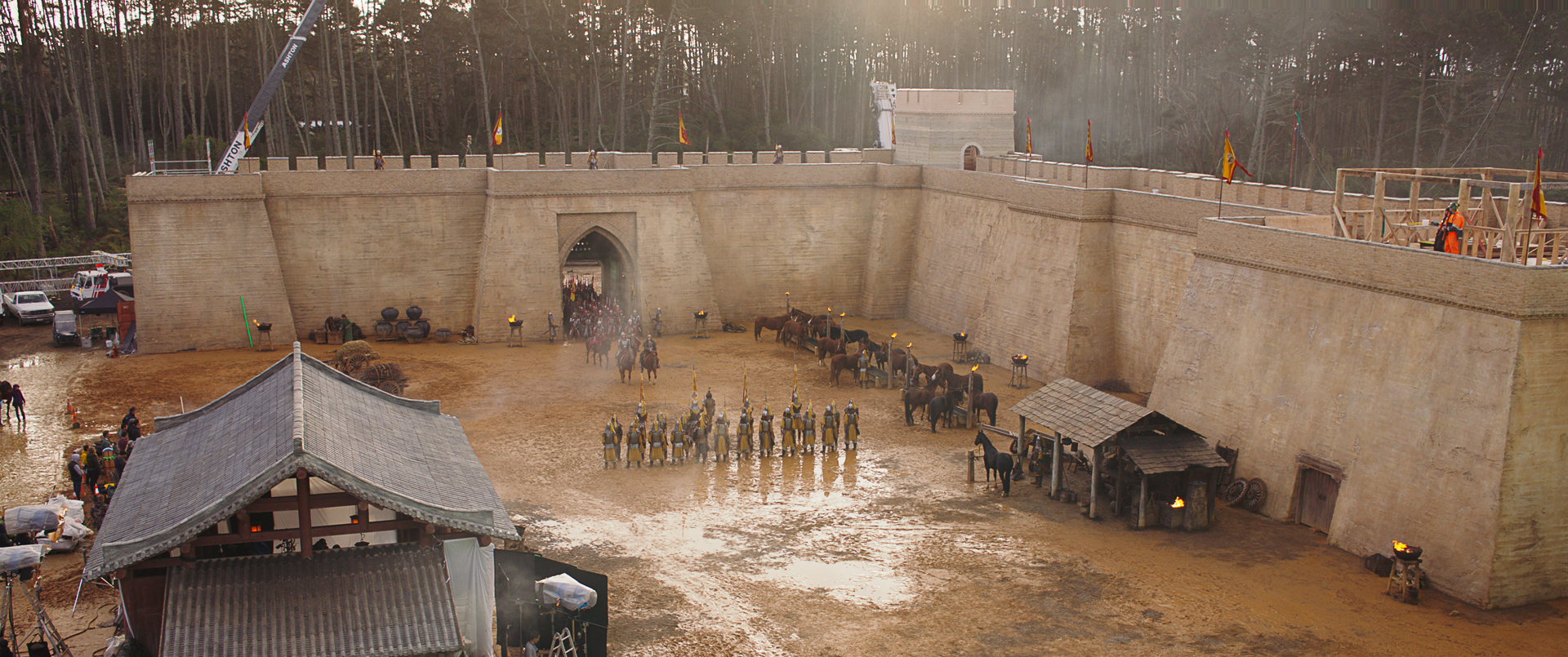
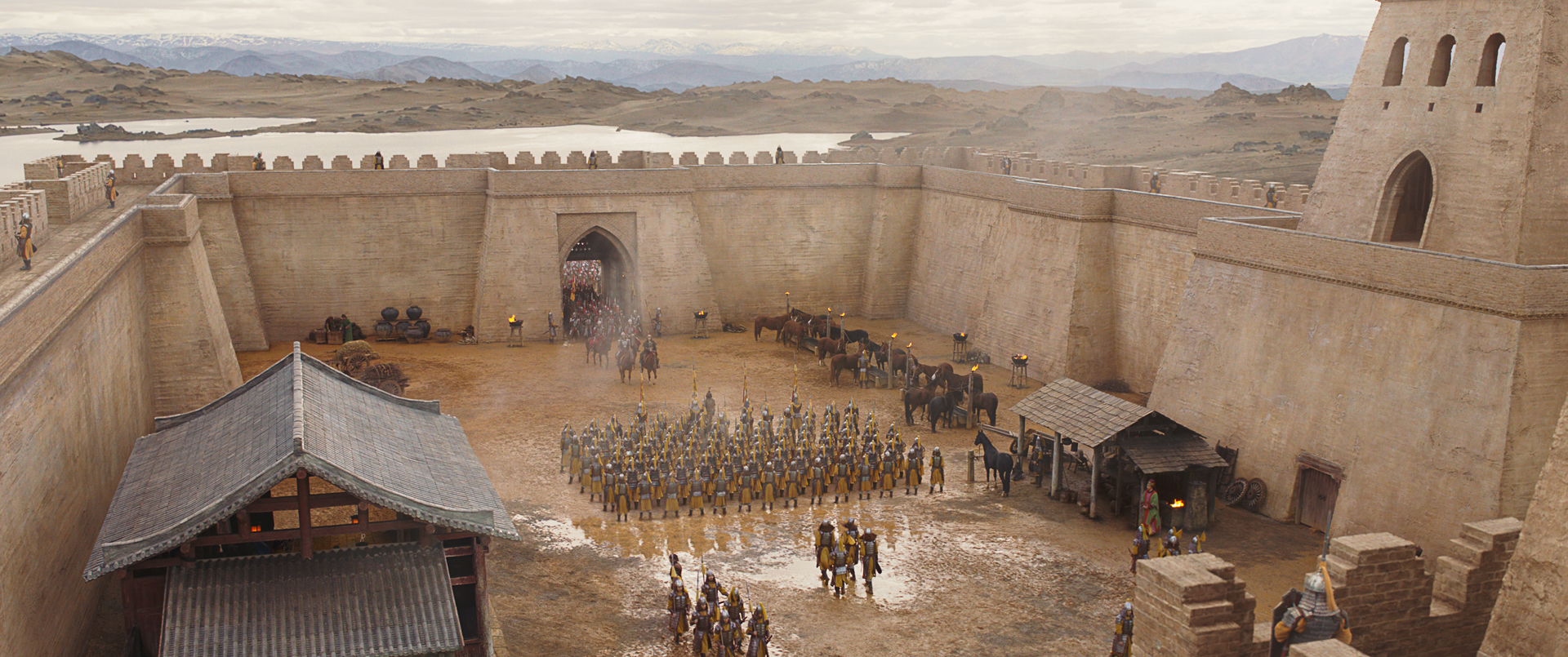
One aerial shot, filmed as if from one of the garrison’s back walls, required the team to replace a woodland backdrop with the sprawling landscapes of imperial china, construct a digital brick wall, and add the garrison’s staunch ziggurat. “We also replaced the garrison’s castellation to give a more distinct look and populated the interior with CG crowds,” adds Christian. “For shots in which actors were inside the garrison or arriving through its arch, we extended the existing set and added various courtyard details, such as the tower as viewed from ground level.”
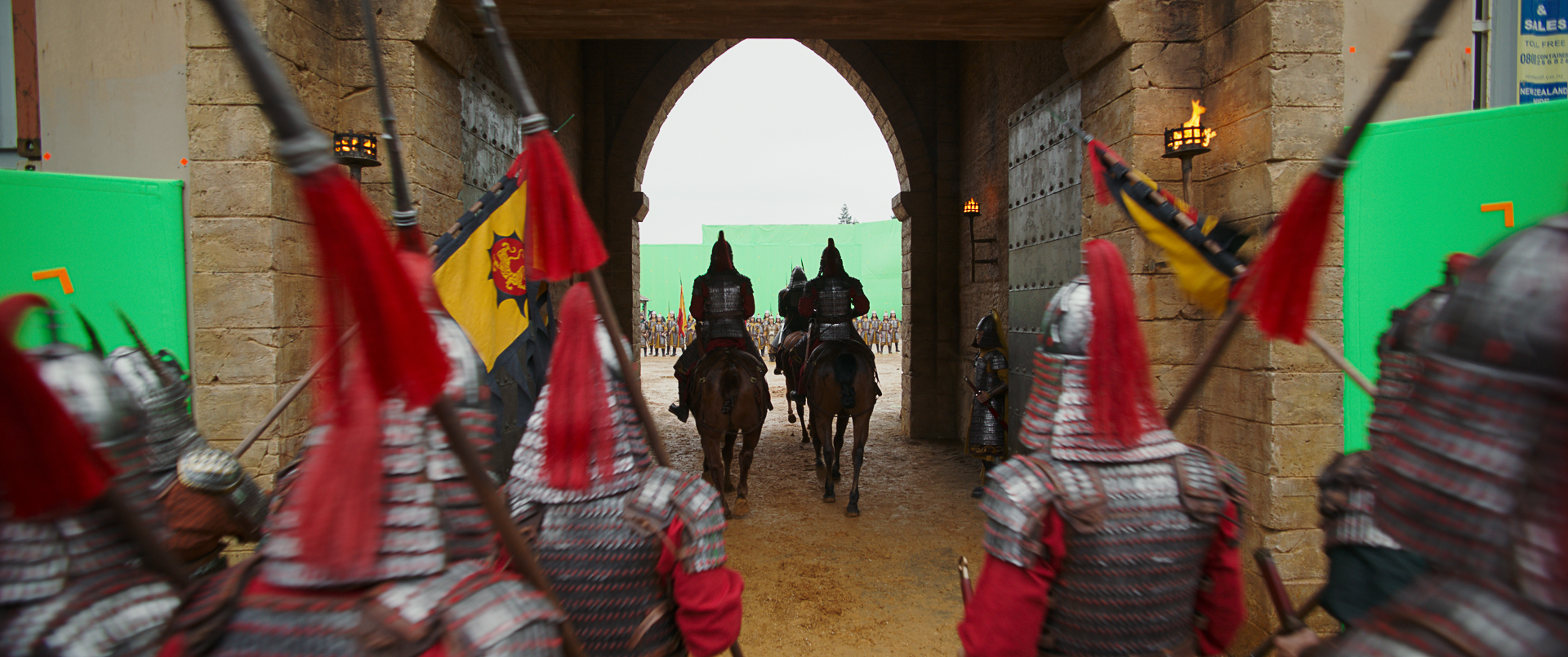
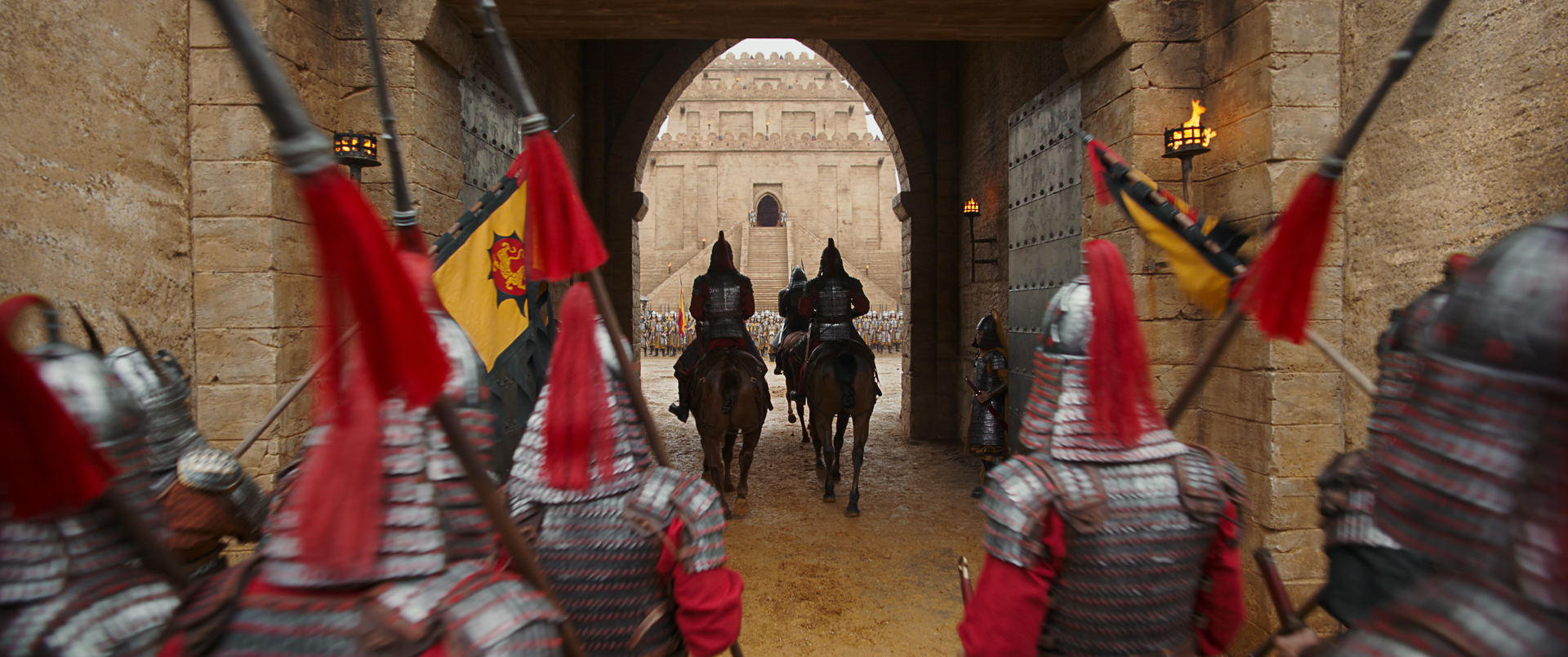
The third and final command post refined and expanded by the Image Engine team was an imperial garrison located to the north of Mulan’s tulou. This is the locus of one of the film’s most exciting set pieces, in which Rouran shadow warriors invade the garrison under the leadership of the seemingly indomitable Böri Khan.
The desert garrison was filmed within the same practical partial set build in Kumeu as the mountain garrison, but with the garrison entrance set into a different wall. To serve the narrative, Image Engine needed to ensure the practical set here felt completely different from its mountain garrison incarnation and as if it were filmed in an entirely separate location.
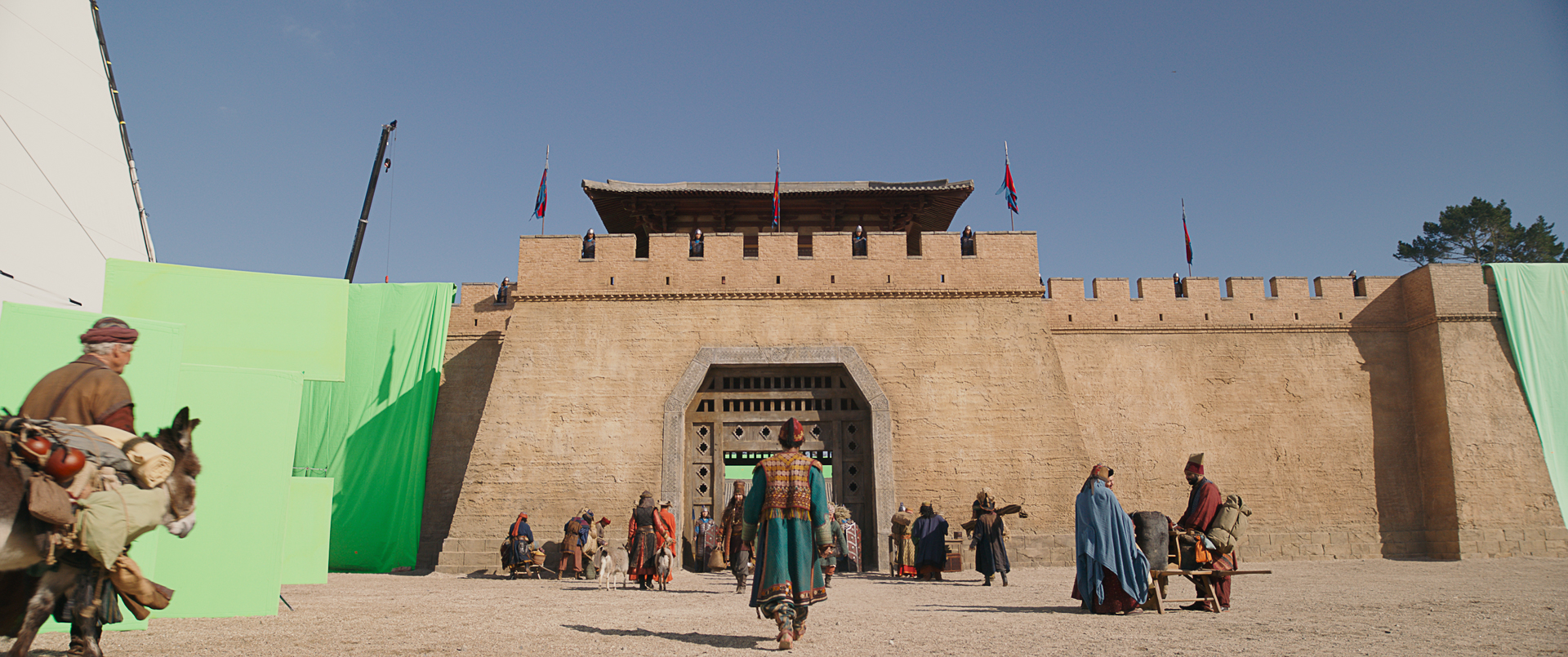
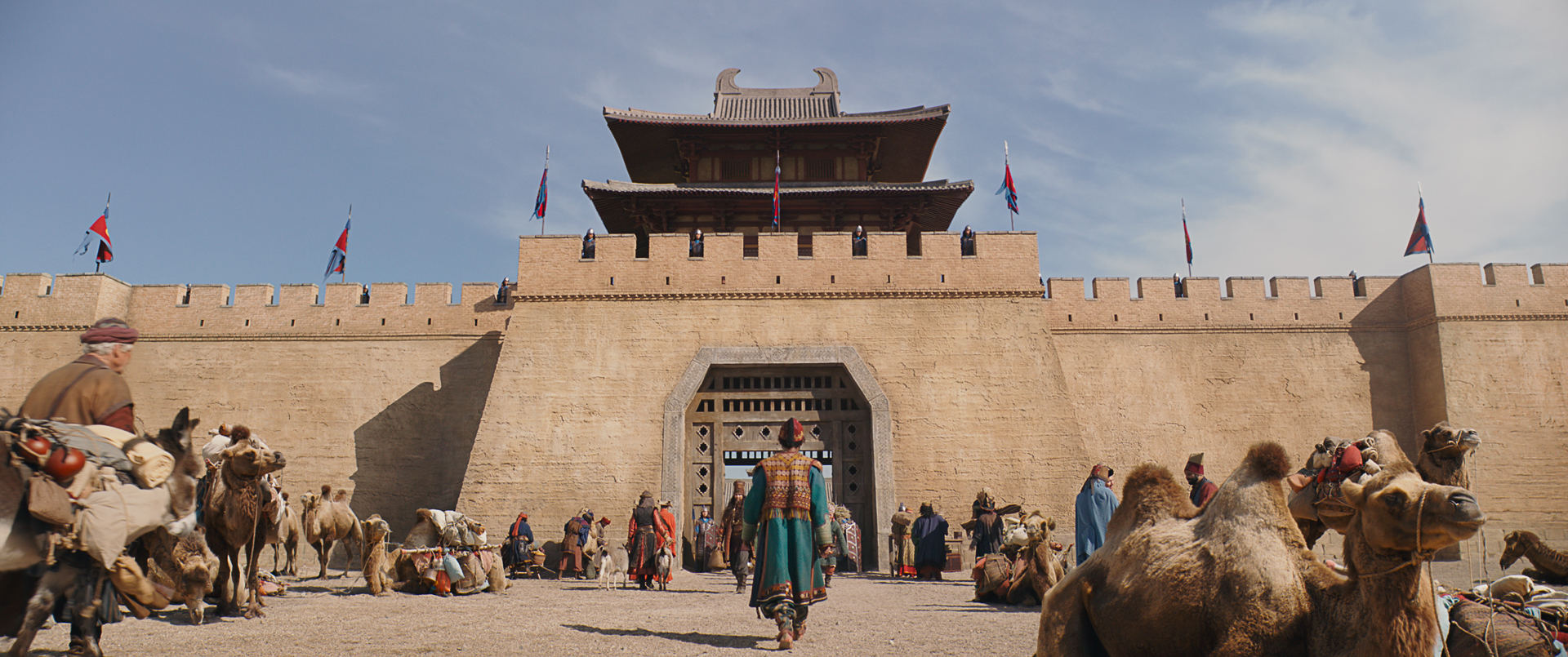
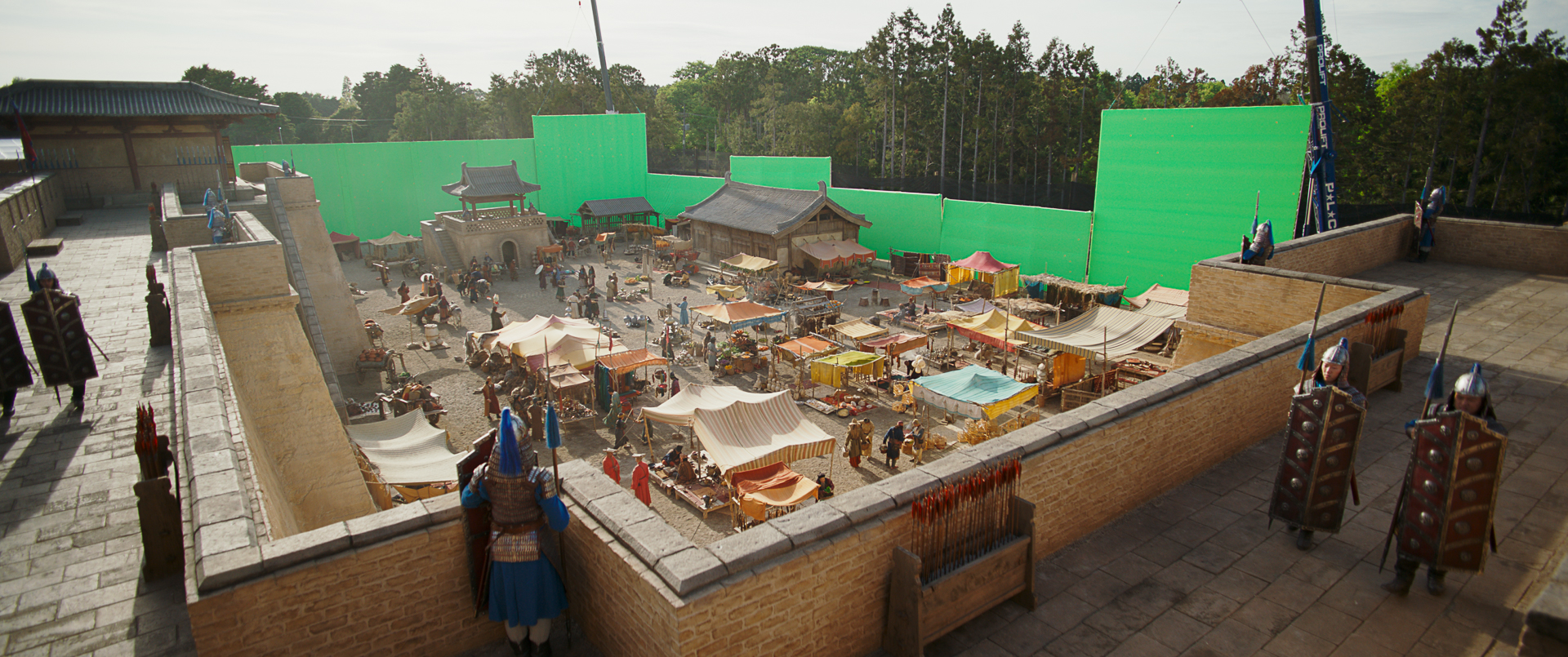

To conjure this impression of a unique and aesthetically distinct building, Image Engine once again enhanced the plate photography with set extensions. “We digitally expanded the physical set’s exterior and interior market and barracks to create the sense of a large imperial keep bustling with life and activity,” says Christian. “In some shots, the work focused on one wall, other times, we had to replace the entire structure. Whatever the work, the team ensured the location felt completely different from the mountain garrison, despite the two settings sharing the same set build!”
Chaaaaaarge!
Böri Khan’s eventual attack upon the desert garrison is a beautifully shot sequence, blending fluid camera work and vast desert scenery with the dynamism and force of a relentless charge. The camera follows the horseback Rouran riders as they thunder across a desert plane toward the garrison, then tracks alongside them as they leap from their mounts and pound up the walls.
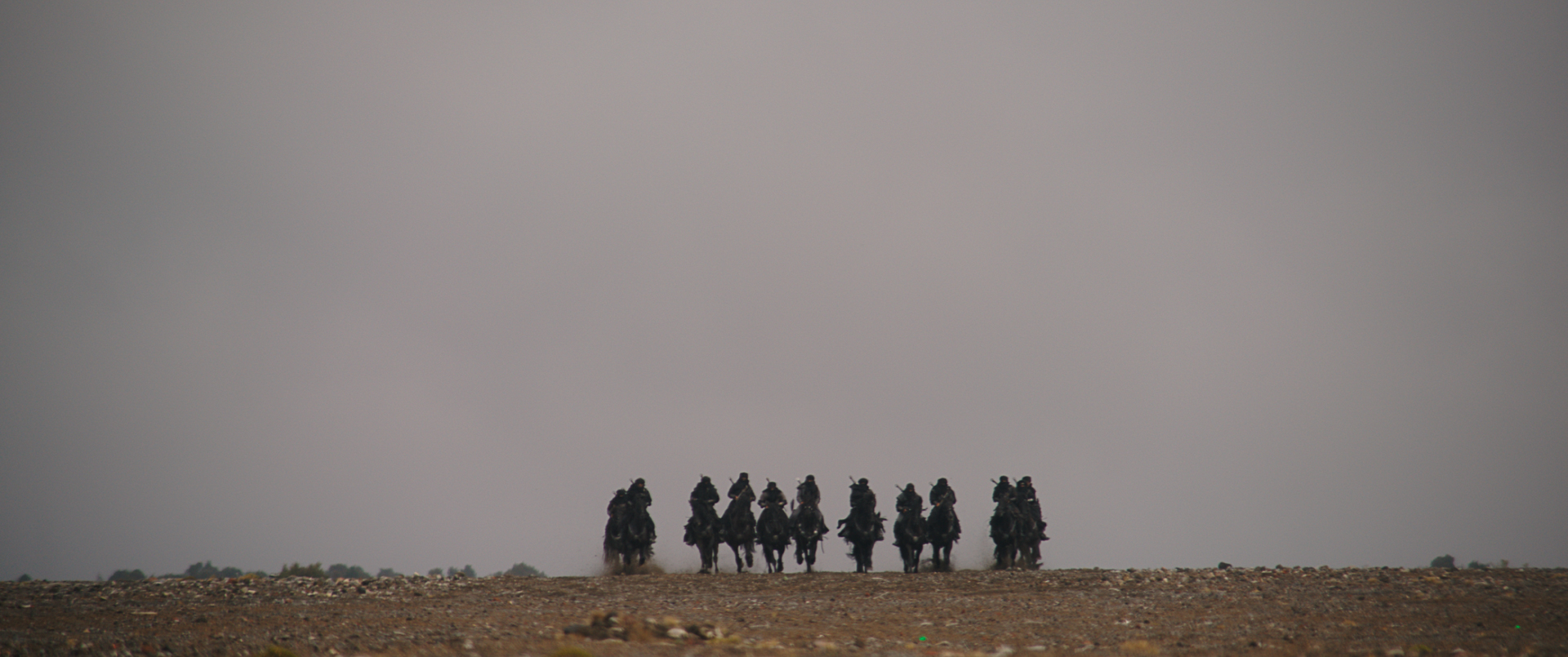
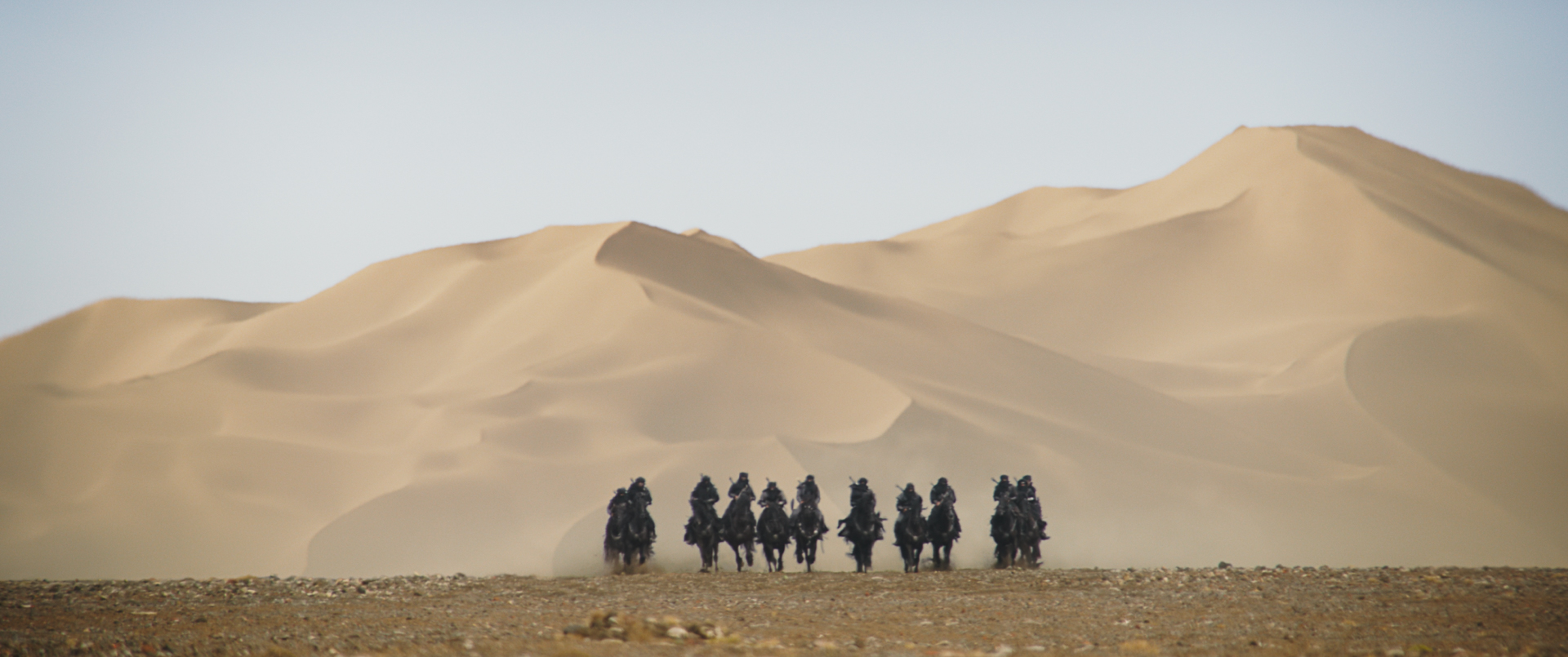
“We made the sequence feel as if it were all filmed in China, even though much of the filming took place in South Island or at Kumeu,” says Christian. “We placed distant dunes, foothills and mountains, originally photographed in China, into the far distance. Doing so meant isolating every element – including the sky, ground, and riders – on a per-shot basis using roto or luminance keys. Next, we balanced all the plates and made them feel coherent. The challenge was balancing a sense of realism with the production’s vision of scenic simplicity. These two concepts can sometimes be at odds, but the team did a fantastic job at reconciling them.”
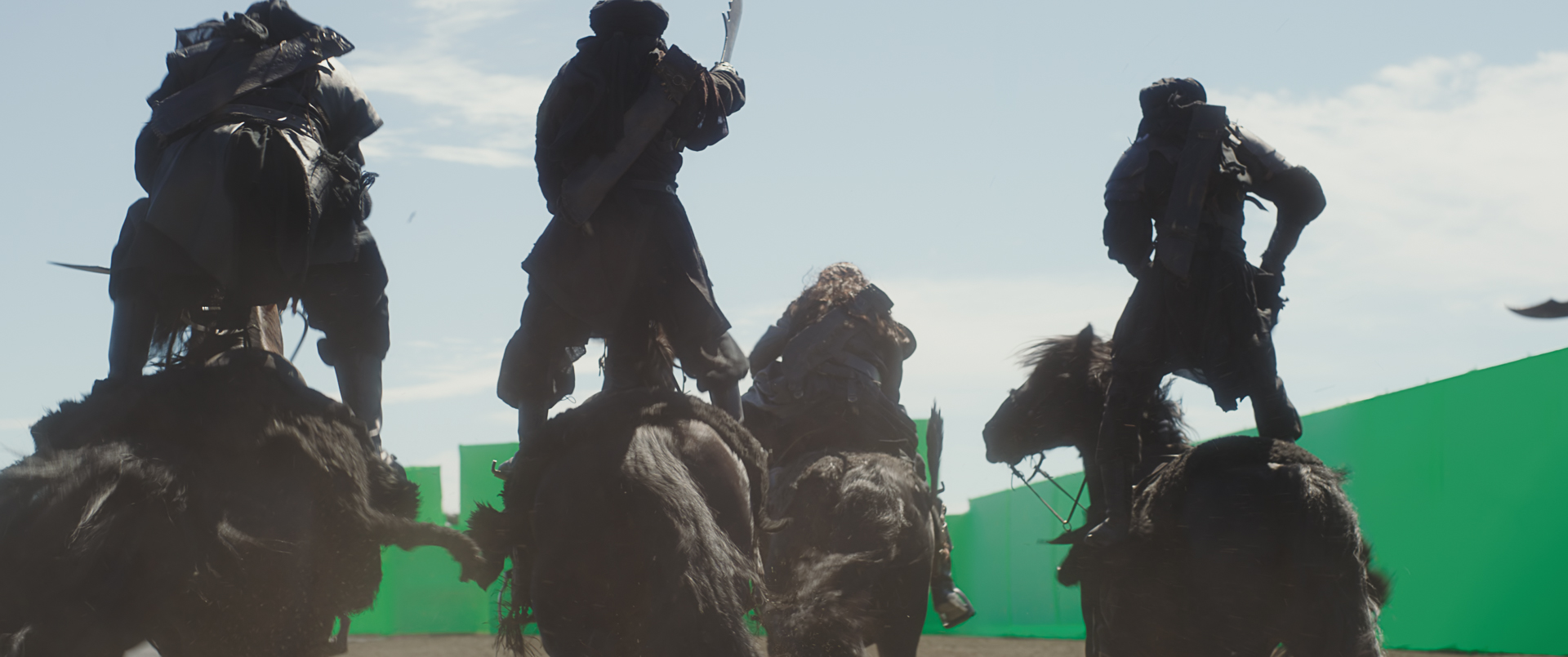
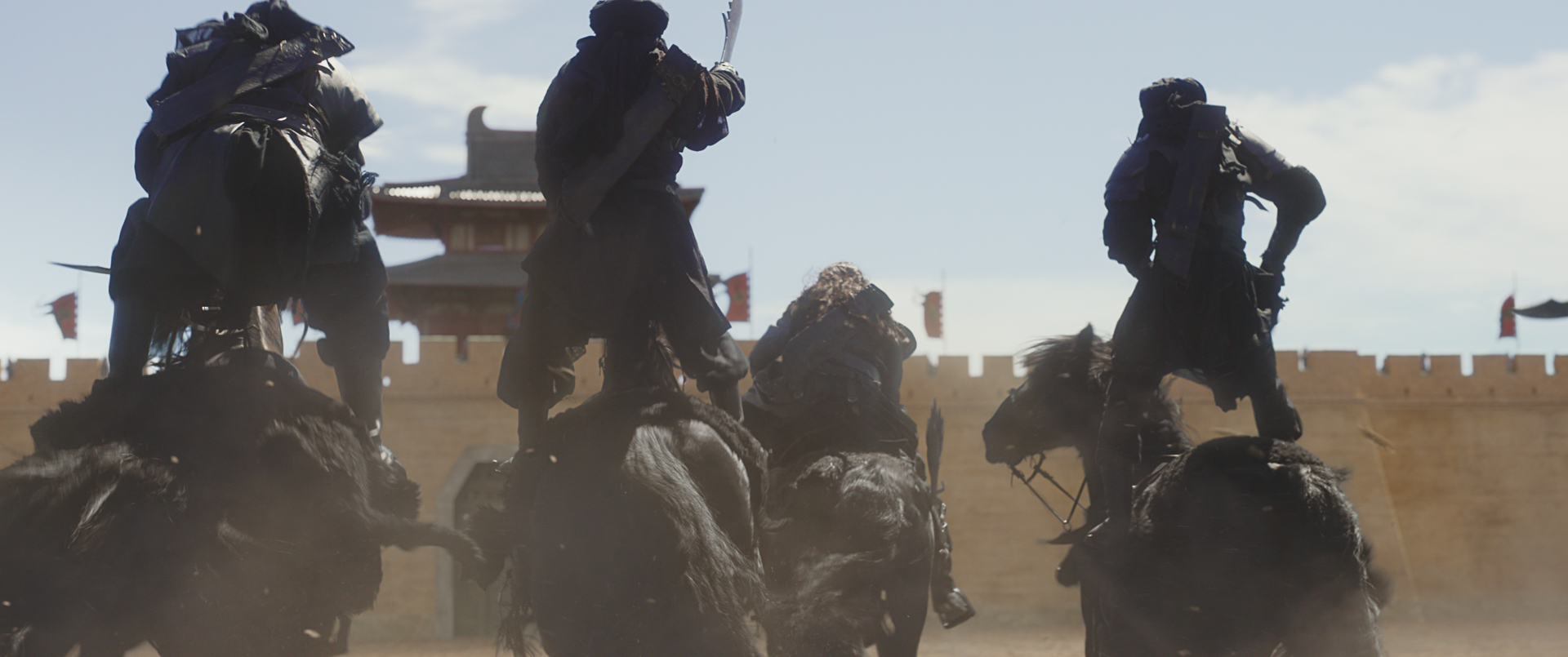
The shot in which Böri Khan and his clan scale the walls of the garrison was filmed in an exterior location at Kumeu Film Studios, with the help of some green screen. (“The natural lighting helped us tremendously!” says Christian.) The stunts were performed using a system of wires and pulleys, all of which Image Engine’s artists had to paint out. Furthermore, the stuntmen did not leap from horses but rather from physical platforms, which the team had to substitute for CG equines.
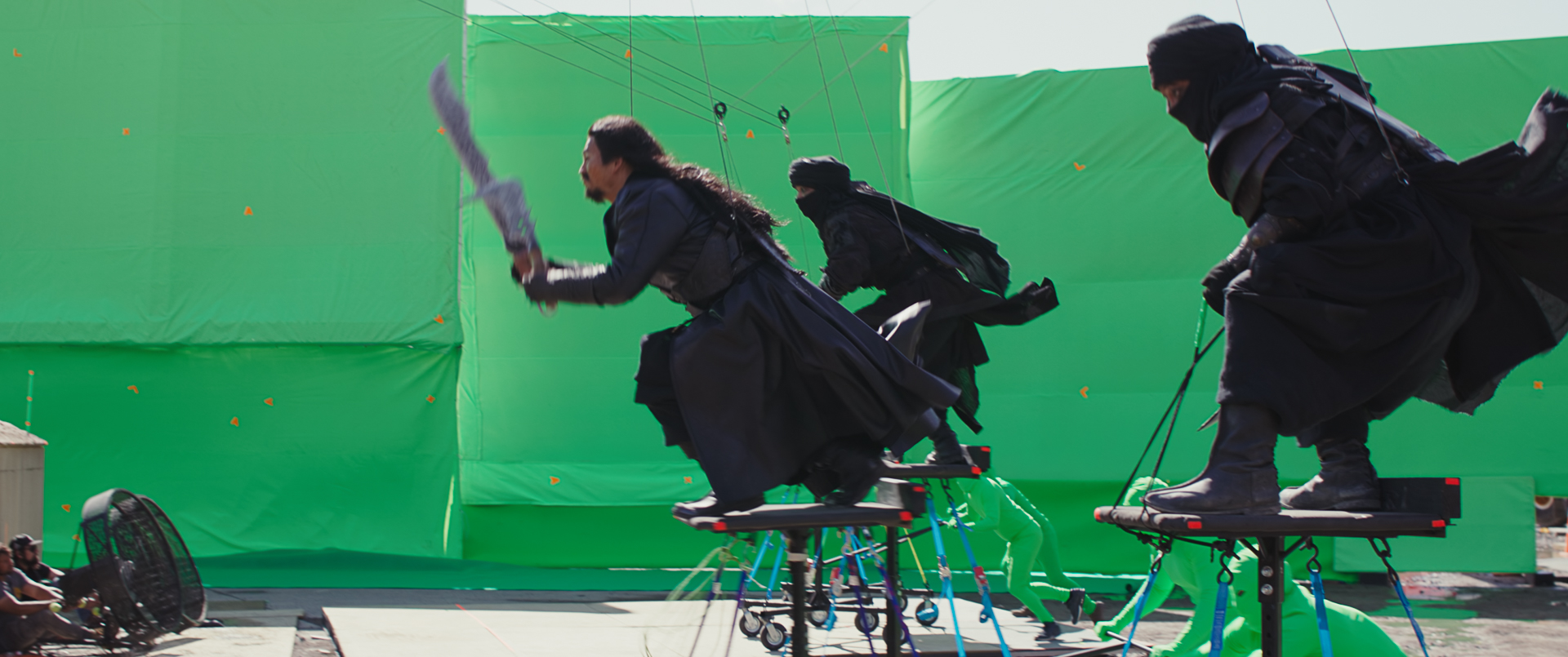

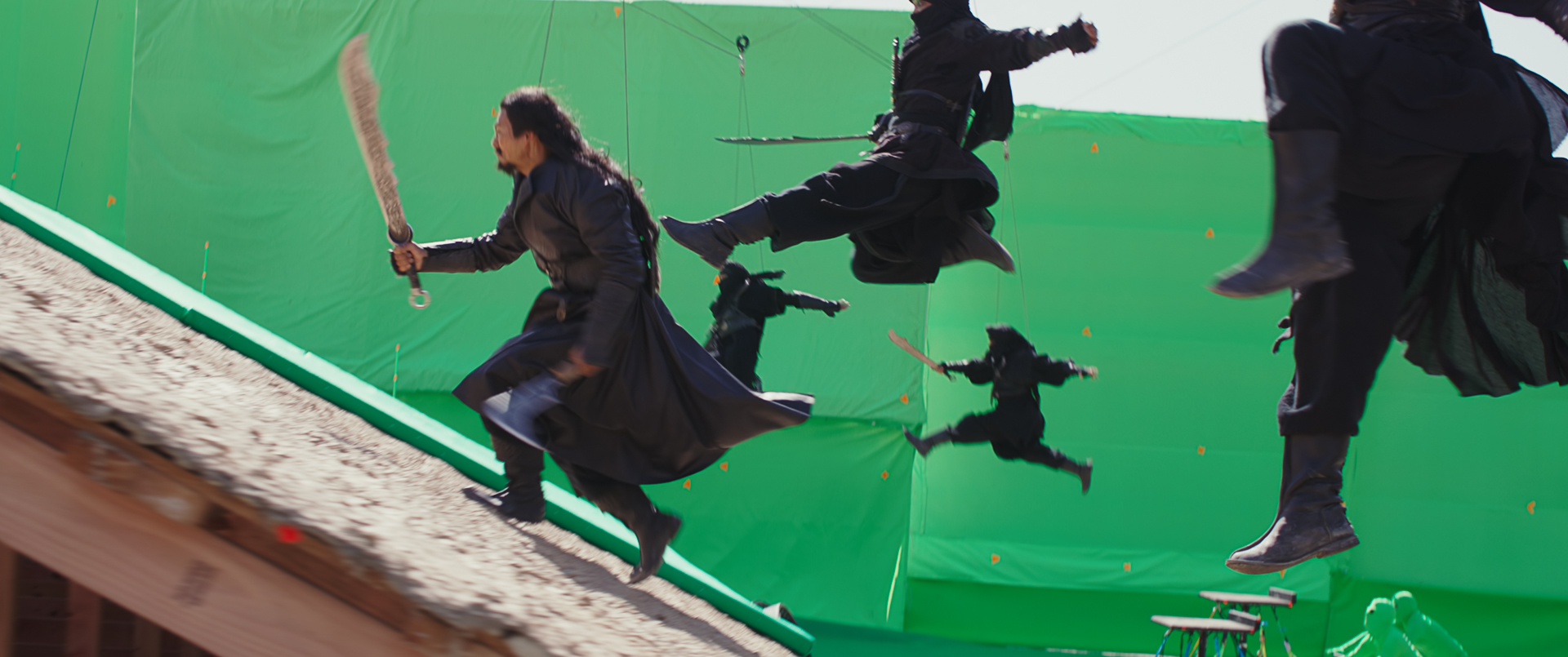

“This was a very complicated shot, involving the concerted efforts of several departments,” says Christian. “Our 3D department handled the CG horses, created the dust they kicked up, and re-created the ground around them in CG to match the sand outside the practical Kumeu set. Similar to our chicken, the CG horses were under close scrutiny as the film cuts between the real horses and our CG counterparts. The juxtaposition left very little wiggle room for unconvincing animals!
“The 3D team also built out the garrison wall and replaced the face of Böri Khan’s stuntman with that of the actor Jason Scott Lee,” he continues. “To increase the panoramic feel of the charge, our DMP department enhanced and extended the CG ground and added background foothills, mountains and sky. Our 2D department painted out all of the wires and platforms, performed all of the roto work to extract the shadow warriors, and assembled all of the CG/DMP and plate elements together. The team also added smaller details, such as replacing practical flags with CG flags that moved with the wind.
“Thanks to these efforts, and the incredibly talented team who delivered them, we produced a shot that looked as if it were filmed on location with real animals, when the truth was anything but.”
Cut from a different cloth
Inside the desert garrison, Böri Khan and his crew receive combat support from Xianniang, a witch who sneaks behind the fortress walls using a conjured disguise. When the time is right, Xianniang reveals her true form behind billowing clouds of colourful CG spice dust, created by the Image Engine FX team.
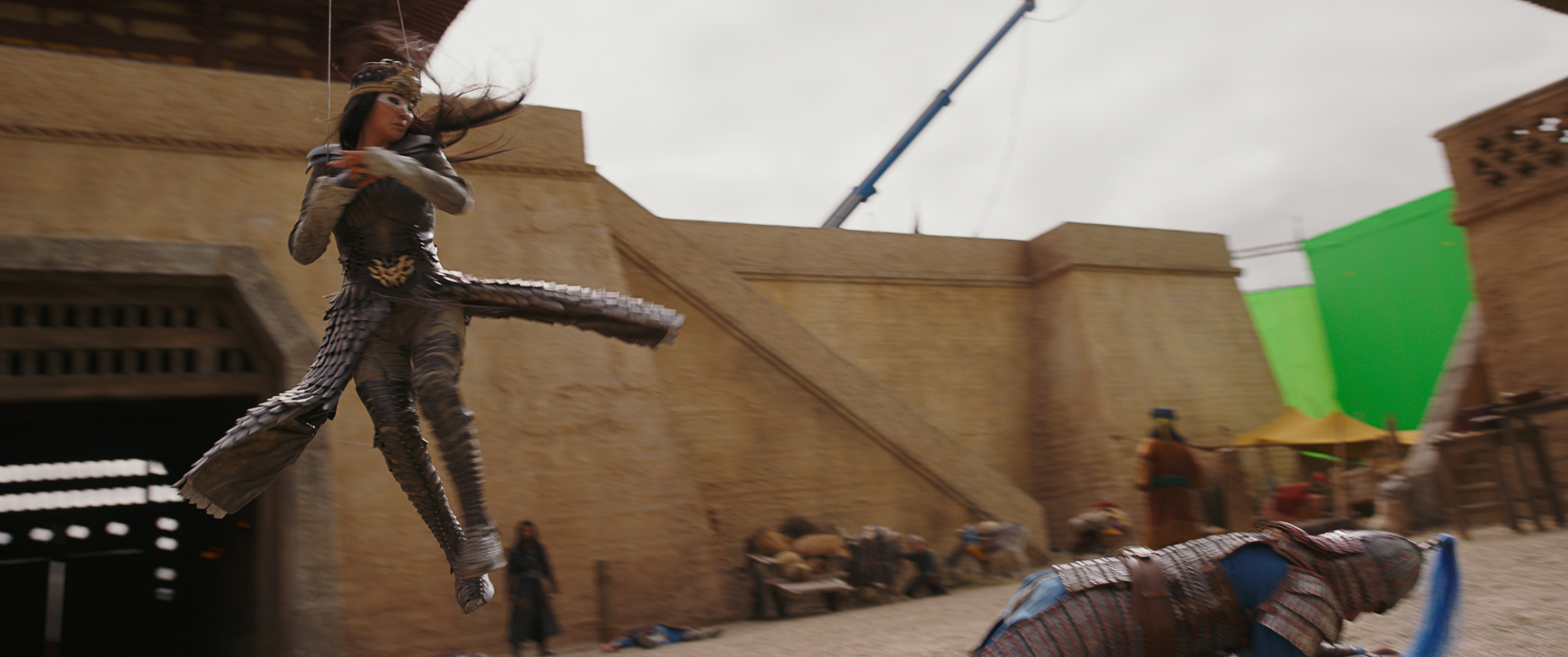
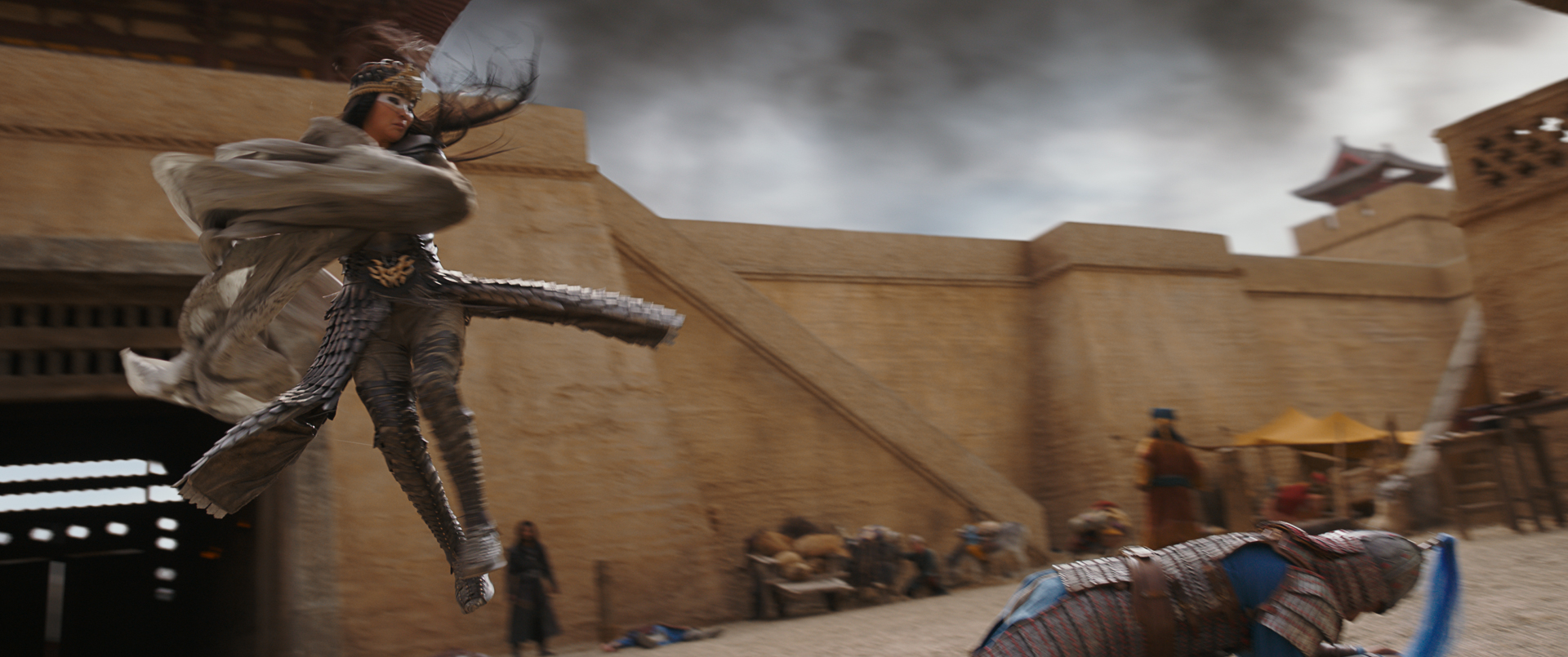
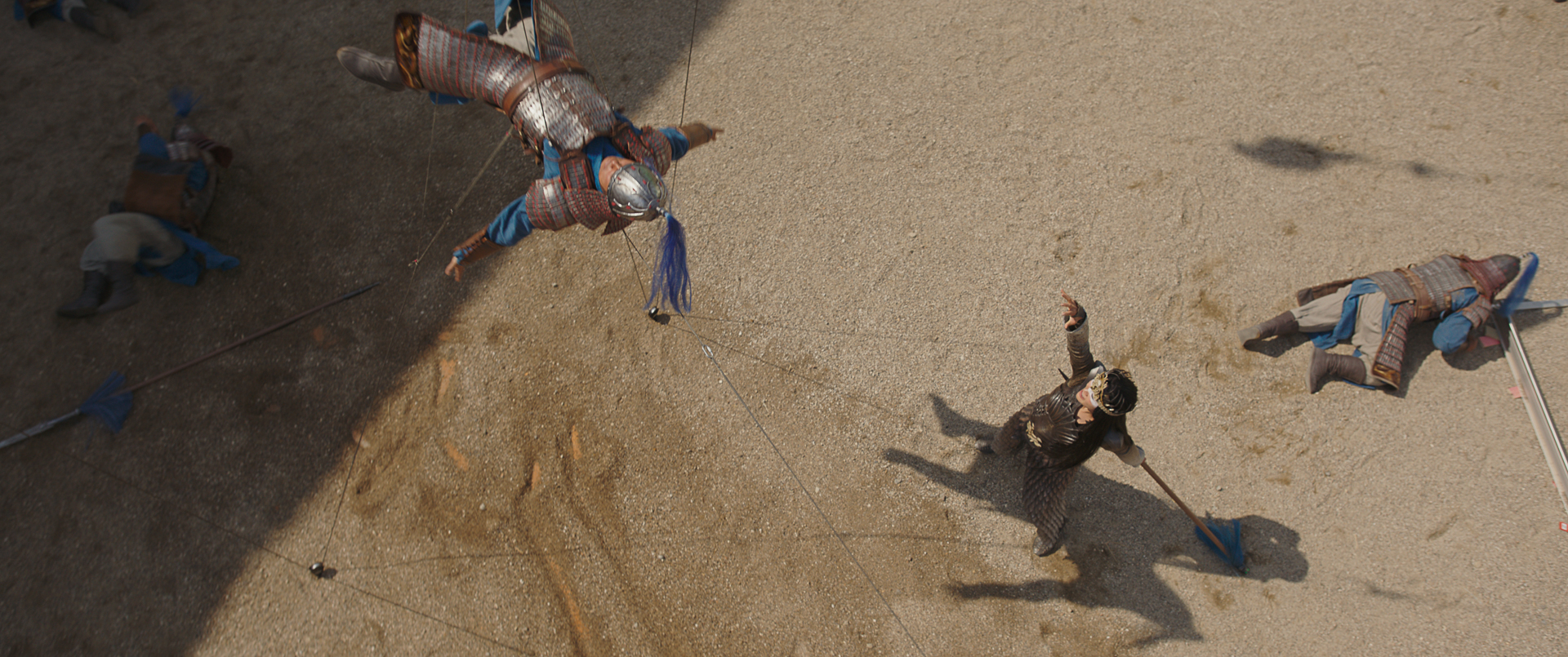
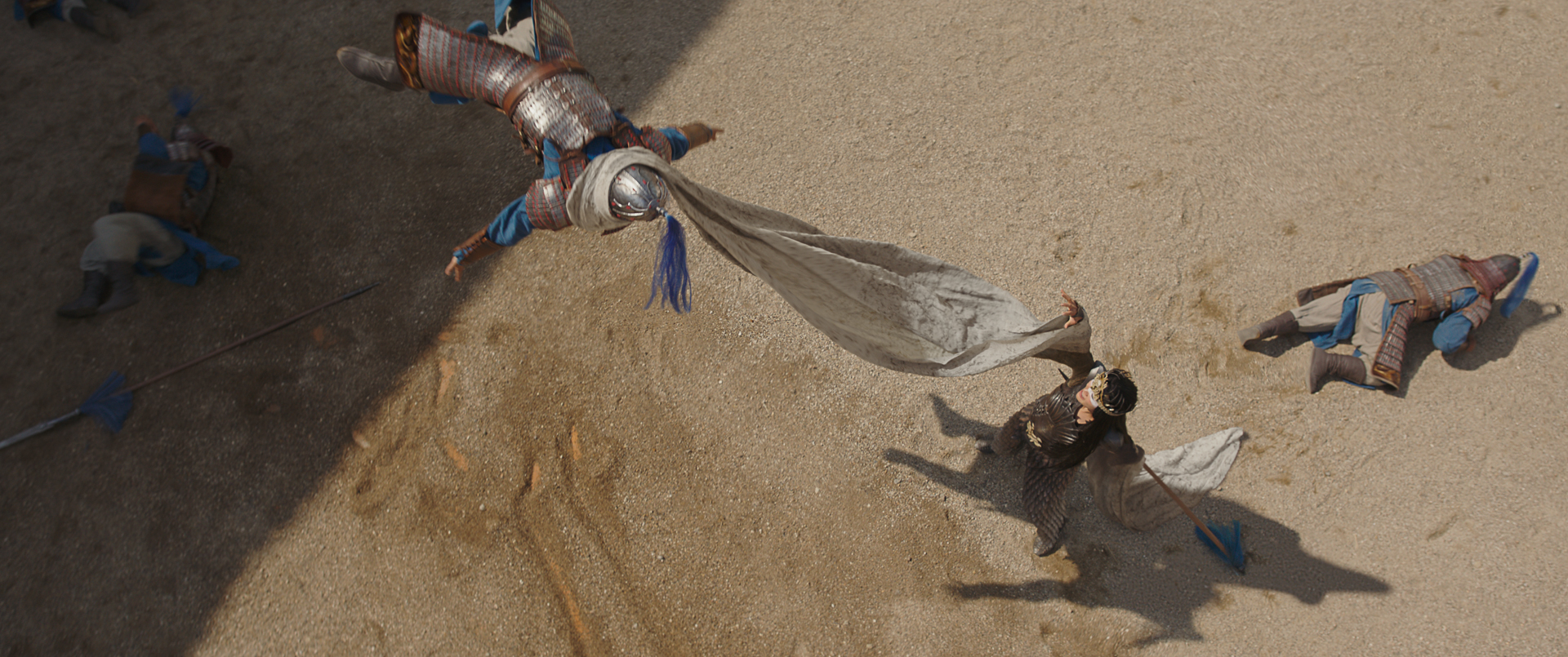
Now in plain sight, Xianniang proceeds to take down a group of guards using a variety of fantastical witchcraft. Image Engine’s VFX brought these powers to life, turning hands into CG hawk talons and the fabric of Xianniang’s sleeves into a weapon capable of choreographed battle, as it whips out and hurls guards against the garrison walls.
The sleeve effect is stunning to watch, but as is often the case with wow-factor effects, it was also one of the most difficult to create. “Xianniang’s sleeves weren’t just material, they were essentially a hero creature!” laughs Yuta. “We wanted to create a believable physical material with weight and physicality that didn’t stretch unrealistically or feel gummy, but also shifted and danced fantastically, almost as if of its own accord. Achieving this balance was difficult, as realism and fantasy are often at odds with one another.”
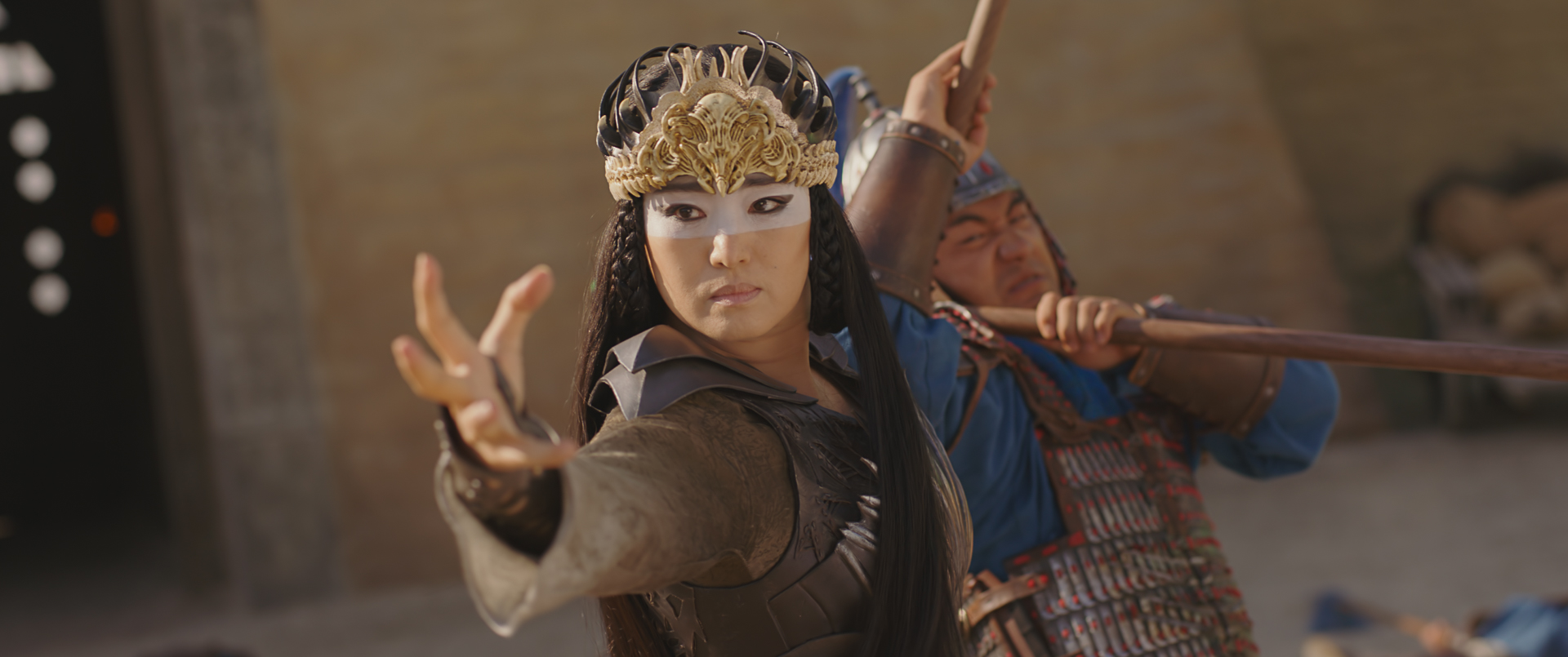

Nevertheless, Yuta and team performed a fantastic job at reconciling the two divergent aspects of the fabric. “We employed Maya’s nCloth, Houdini’s Vellum and Marvellous Designer,” he continues. “We then used stretch/compression-based displacement for the fabric’s history wrinkle, and created an OSL-based deformer in Gaffer to add extra details on any shots requiring additional manipulation.
“Once we nailed the fabric’s deformation, we approached the next challenge: making the sleeves as beautiful as they were brutal. The production had particular references for the backlighting and how it should affect the look of the material. Our lighting team got stuck in and did an amazing job, adding a touch of scattered light here and there to create the ‘soft yet strong’ look the production was after.
“The sleeves were ultimately a work of beauty, both aesthetically and technically.”
Invisibility and consistency
Whereas Image Engine is more typically known for its creature work – aliens, dinosaurs and fantastic beasts that commandeer screen and imagination alike – Mulan posed a different kind of work; the kind where staying hidden, rather than ‘going big’, was the order of the day.
“BGPrep painted out a ton of stuff, from tracking dolly sliders to objects that sometimes covered the entire frame. You will never notice those objects were there when watching the film,” says Jesus. “The creative seams are simply invisible. We had plates shot with multiple camera formats and in a wide variation in colour and light conditions. The team did amazing work in attuning the colour palette and making everything feel as if it were from a consistently, aesthetically aligned project, across all 271 shots. The result is like a single, beautiful tapestry.”
“That sums it up for me,” adds Christian. “We did so much technical work, but the real achievement was making it all consistent. Whether a CG horse or a DMP mountain, audiences really can’t tell if they’re looking at a visual effect, or at a shot filmed in a completely different country.
“Some say visual effects are at their most effective when you can’t distinguish them from reality,” he concludes. “To my mind, Image Engine’s work on Mulan presents one of our best affirmations of that statement so far. The team truly delivered stunning work.”


